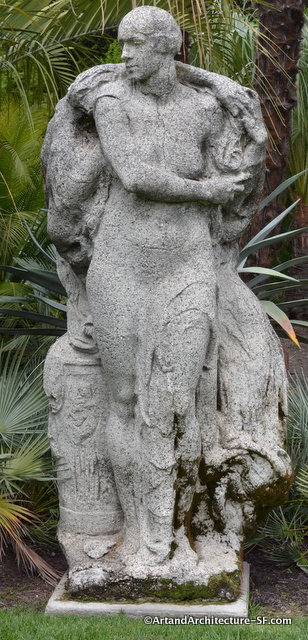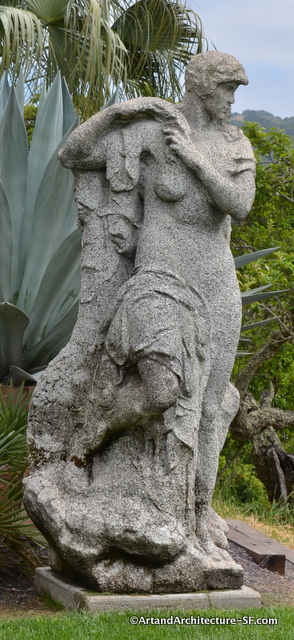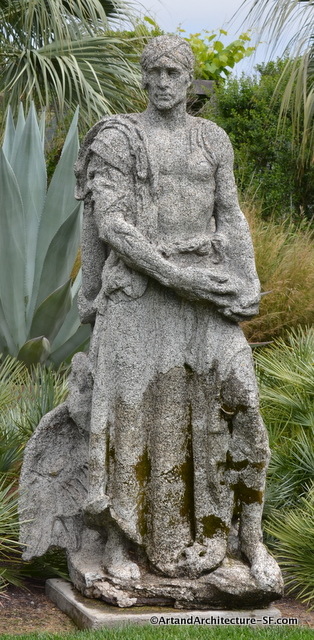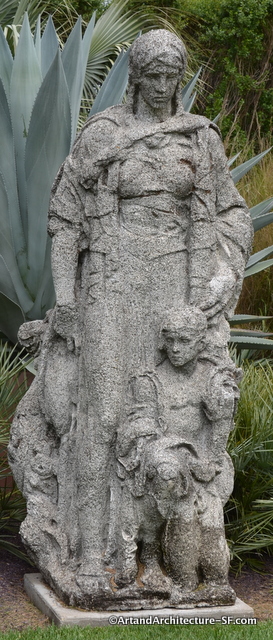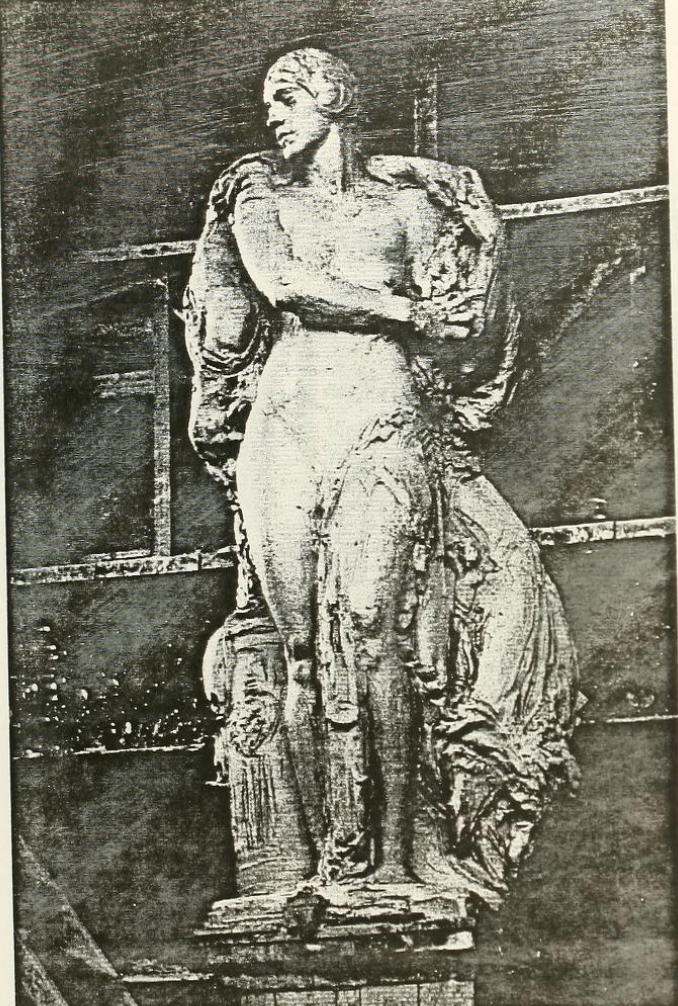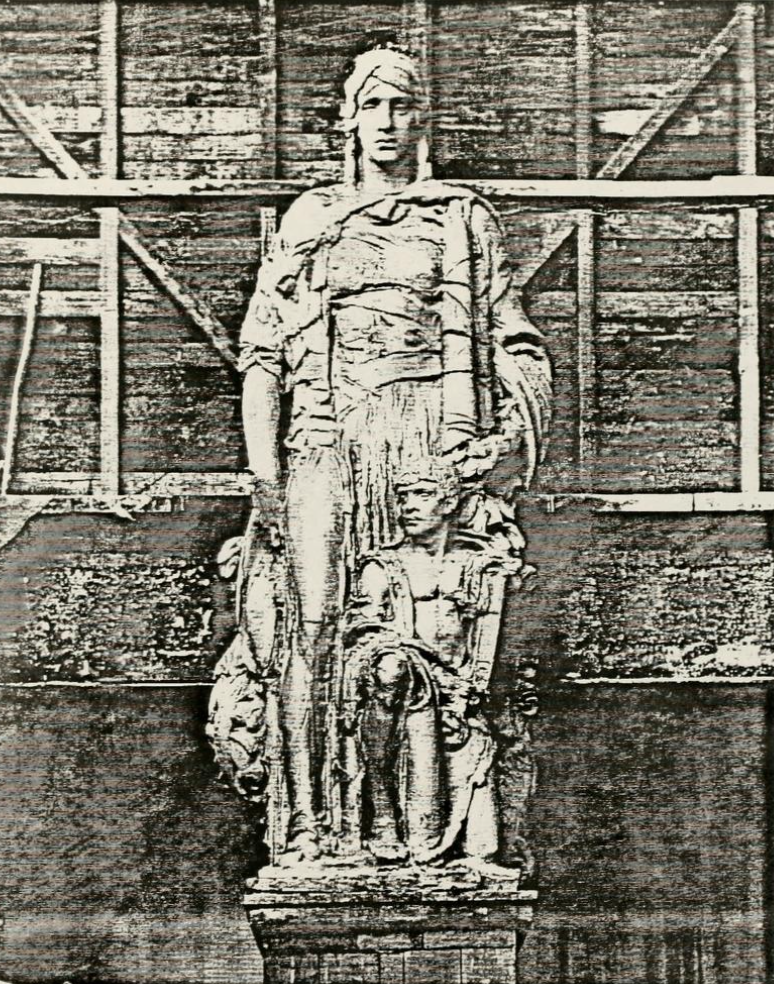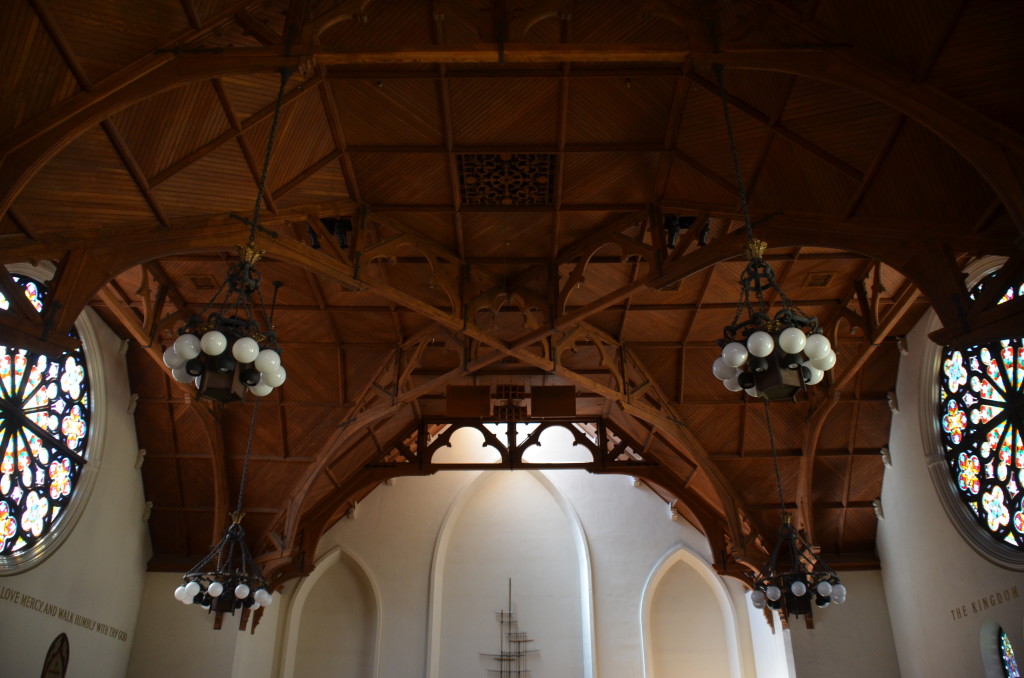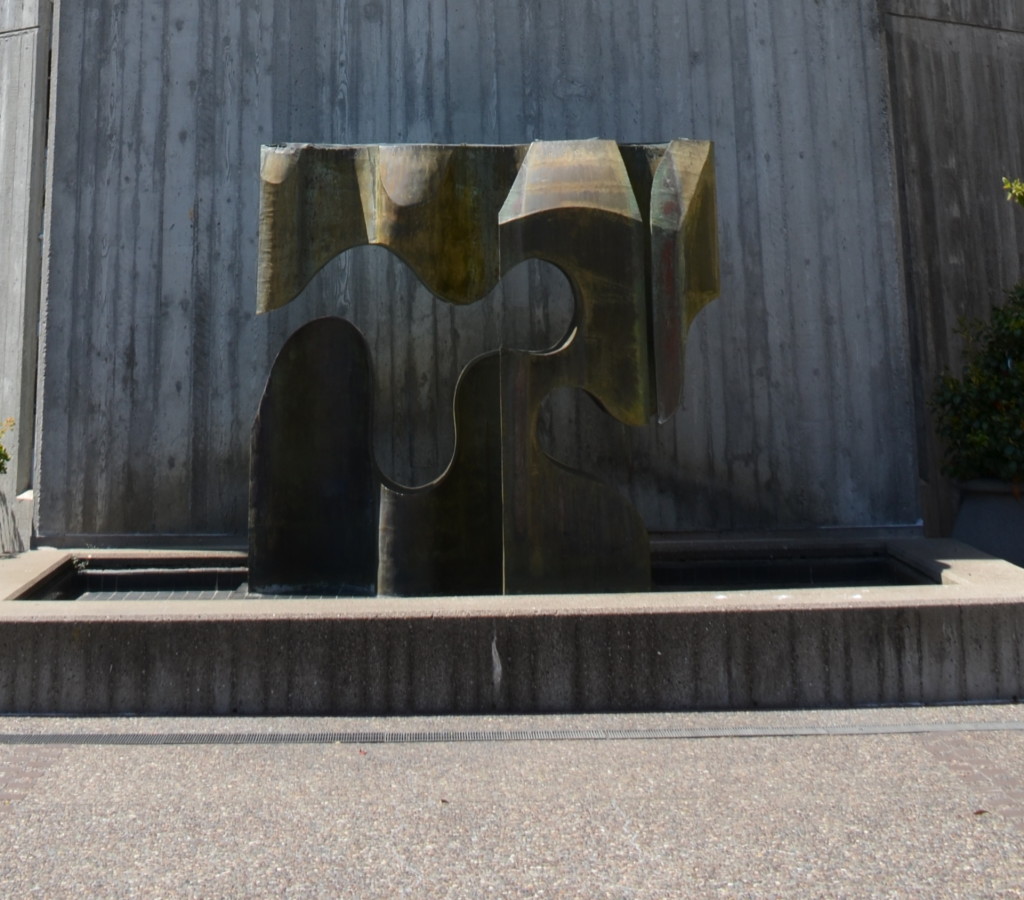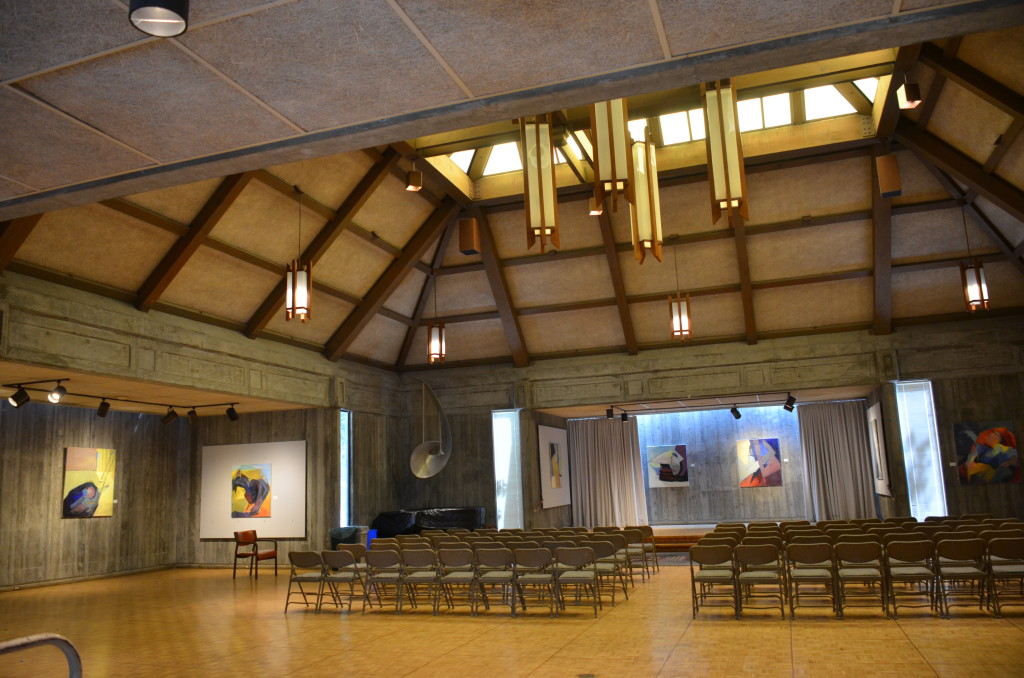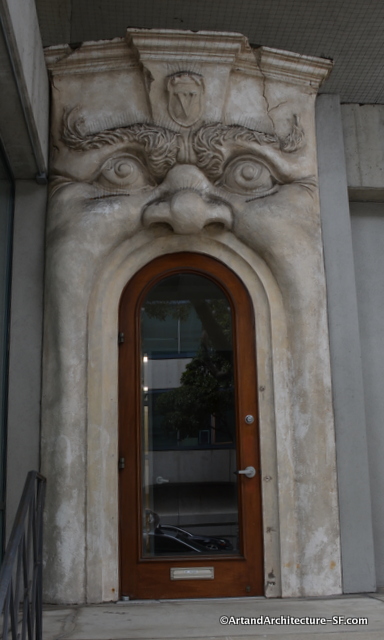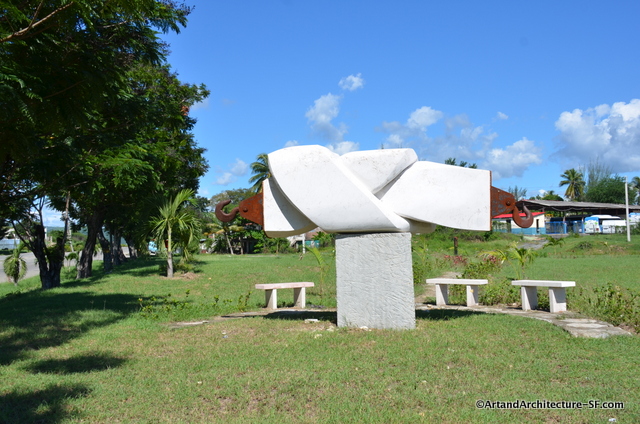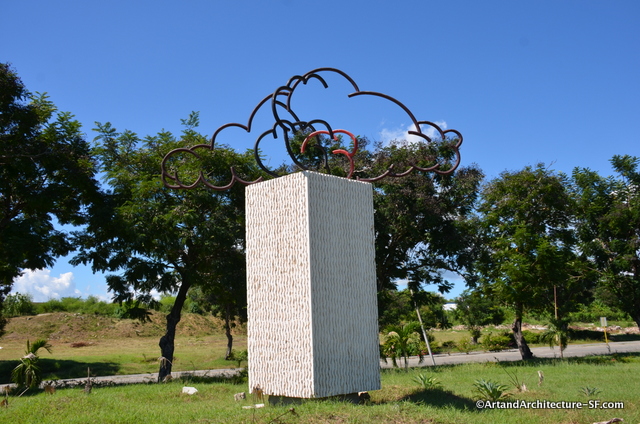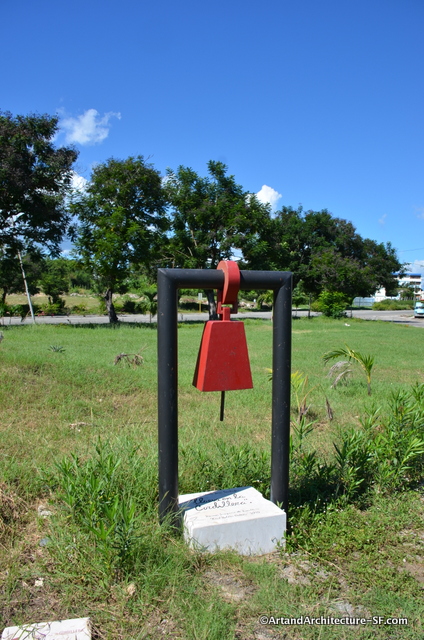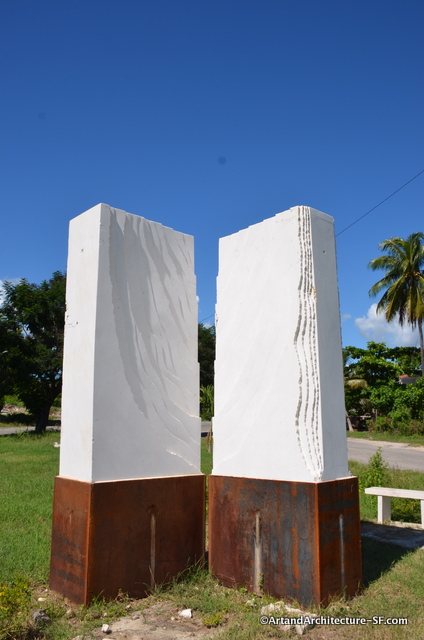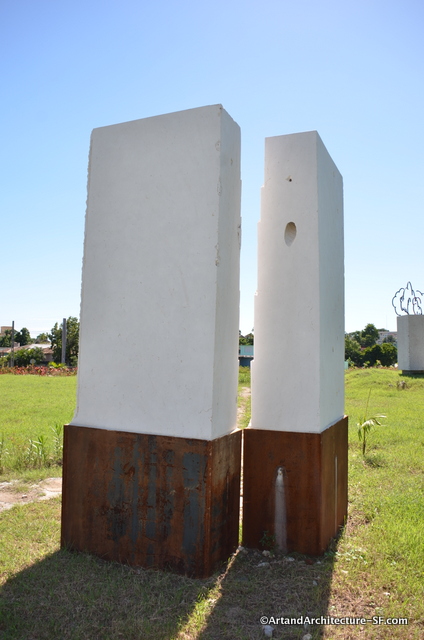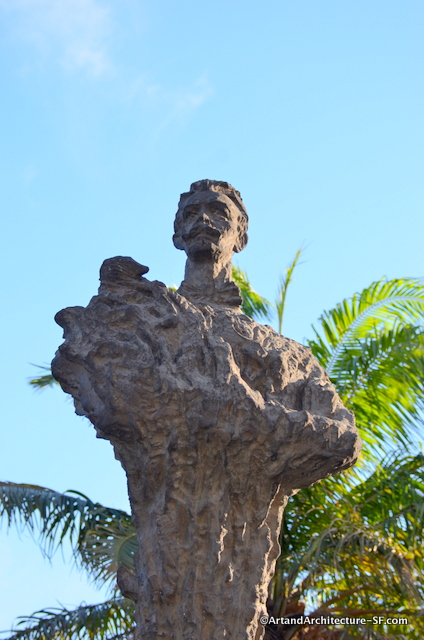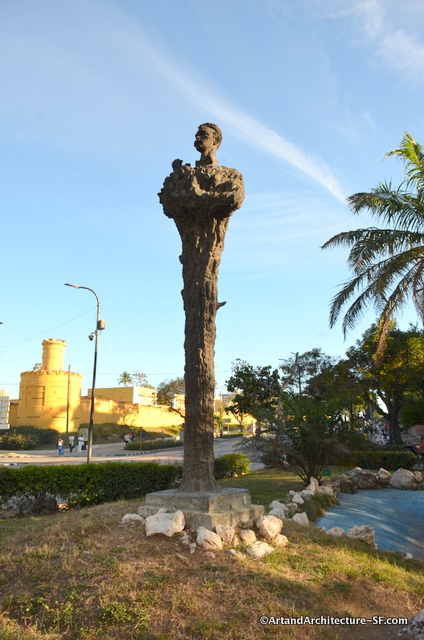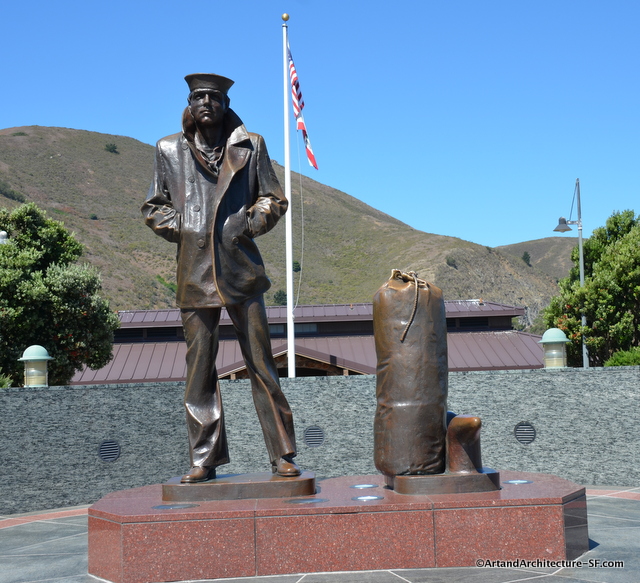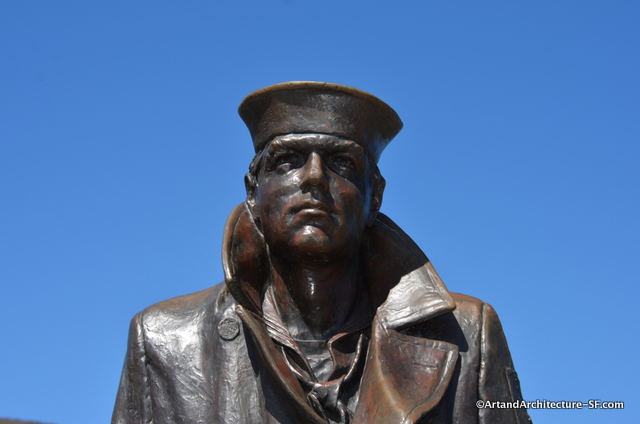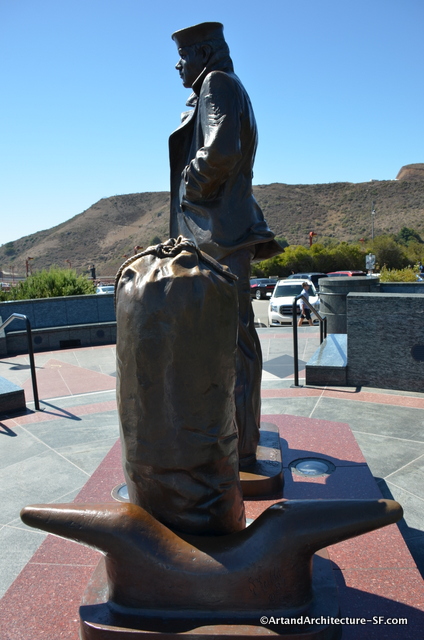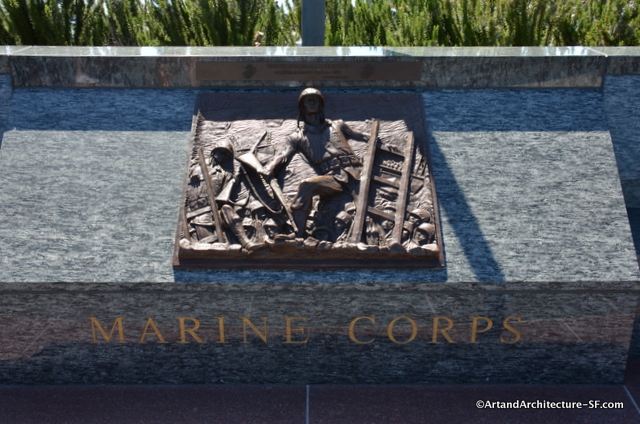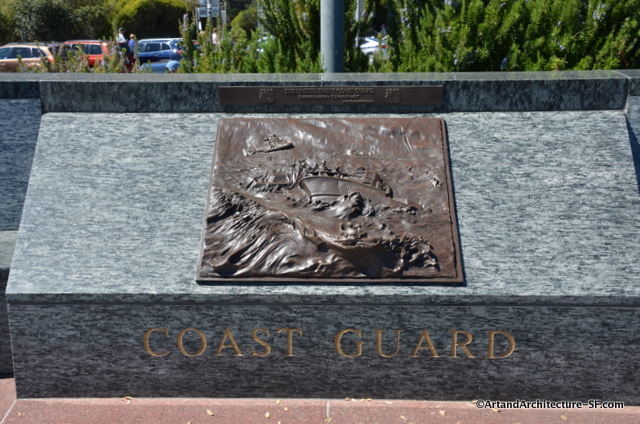Traffic Circle at Avenue Manduley and Calle 11
Santiago de Cuba
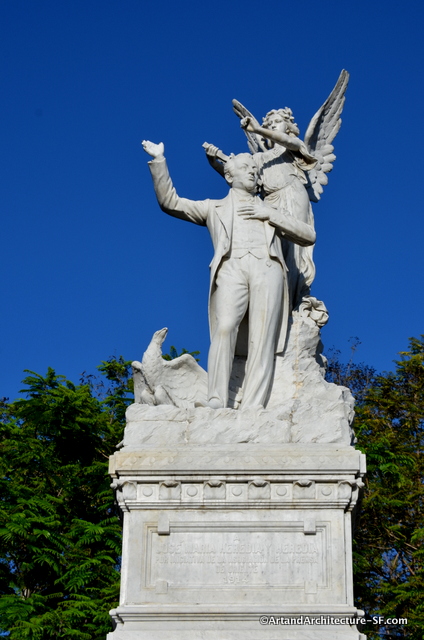
According to Cuba Facts Jose Marie Heredia y Heredia was born in Santiago de Cuba on December 31 1803, and lived a short thirty-five years, spending most of his adult life in exile.
In 1818 he enrolled in the University of Havana as a law student, and it was about this time that he met Isabel Rueda, to whom he wrote and dedicated erotic poetry. His first dramatic effort (the play Eduardo IV o el usurpador clemente) was produced by a theatre group in Matanzas.
On October 31 1820, his father died in Mexico.
In November 1823 Heredia joined the secret society: LOS SOLES Y RAYOS DE BOLÍVAR (The Suns and Rays of Bolivar, named after the liberator of South America, Simon Bolivar), which sought independence from Spanish rule. The conspiracy was discovered, and Heredia, disguised as a sailor, escaped to Boston. He later spent time in Philadelphia and New York, where he earned a living as a language teacher.
Heredia’s first collection of poetry was published in 1825, and was dedicated to his uncle, Ignacio. Another collection was published in Toluca in 1832.
On September 1 1836, Heredia wrote to Captain-General (of Cuba) Tacón and requested permission to return to Cuba, claiming that his ideology had changed in the 12 years of his absence.
After he returned to Cuba, he was not very popular with many who called him a “sell-out.” As a result, he returned to Mexico, where he died in May 7 1839.
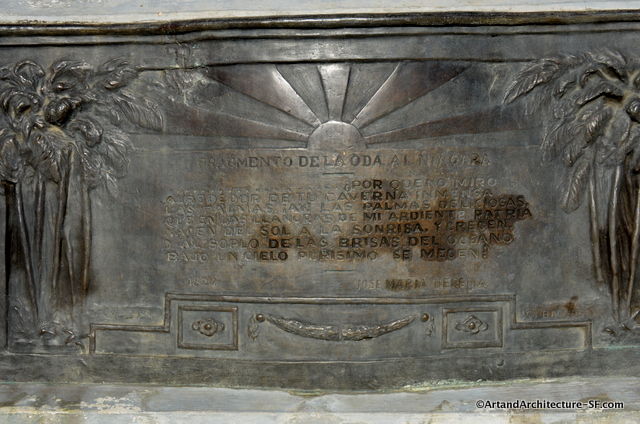
A fragment of Ode to Niagra.
The sculptor on this piece is not known, however, the statue, erected some time before the Castro revolution, was funded by the Bacardi family.
Ode to Niagara was written n 1824, when Herdia was 20 years old. It is actually an ode to Niagara Falls. It has been said it is the greatest poem written about the falls.
There is a plaque at Table Rock, near the brink of Niagara Falls on the Canadian side.
It reads: “To the Niagara from the Cuban people, October 1989”. Heredia (1803-1839) was exiled in 1823 for penning his first Cuban revolutionary poem The Star of Cuba. Although banished officially to Spain for agitating for Cuban independence, Heredia continued to work for Cuban freedom. In 1831 he was sentenced to death in Havana for “criminal involvement” in a conspiracy for Cuban independence. He died in Mexico at the age of 35.
While in exile, he visited Niagara Falls and wrote his famous “Ode to Niagara”, which was first published 1825. In 1827 William Cullen Bryant was the first to translate it into English. Lines from the poem are inscribed on the plaque.
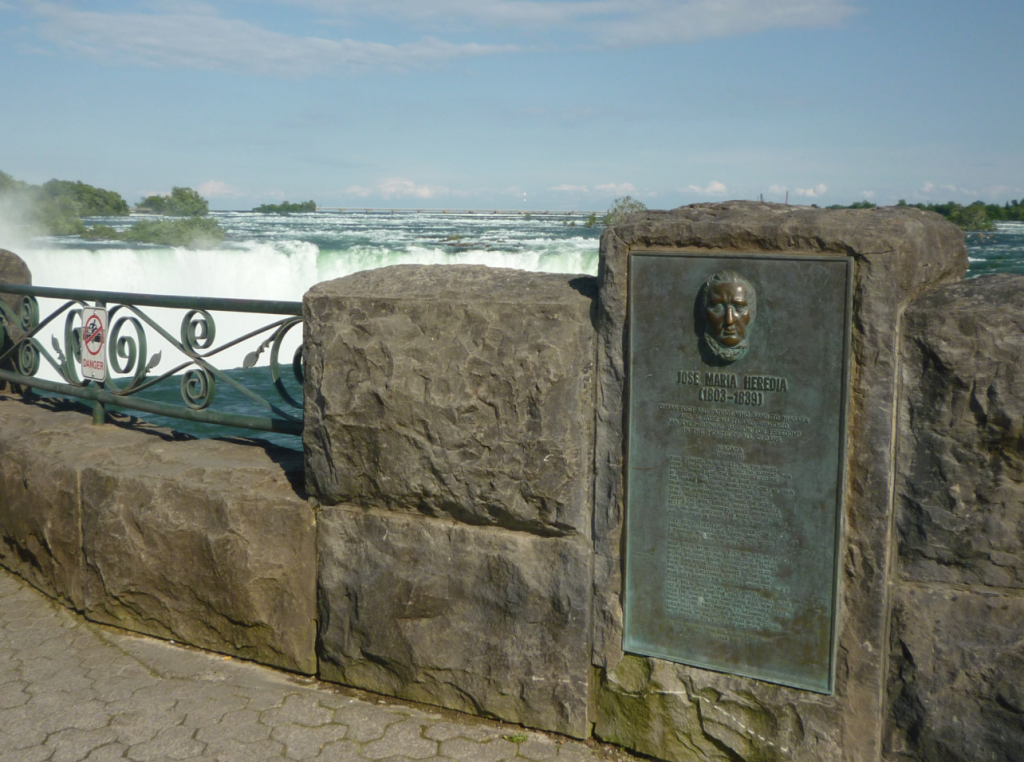
Photo from WikiCommons
Here is an English translation of the poem:
NIAGARA
My Iyre! give me my Iyre! My bosom feels
The glow of inspiration. O how long
Have I been left in darkness since this light
Last visited my brow, Niagara!
Thou with thy rushing waters dost restore
The heavenly gift that sorrow took away.
Tremendous torrent! for an instant hush
The terrors of thy voice and cast aside
Those wide involving shadows, that my eyes
May see the fearful beauty of thy face!
I am not all unworthy of thy sight,
For from my very boyhood have I loved,
Shunning the meaner track of common minds,
To look on nature in her loftier moods.
At the fierce rushing of the hurricane,
At the near bursting of the thunderbolt,
I have been touched with joy; and when the sea
Lashed by the wind, hath rocked my bark and showed
Its yawning caves beneath me, I have loved
Its dangers and the wrath of elements.
But never yet the madness of the sea
Hath moved me as thy grandeur moves me now.
Thou flowest on in quiet, till thy waves
Grow broken ‘midst the rocks; thy current then
Shoots onward lke the irresistable course
Of destiny. Ah, terribly they rage–
The hoarse and rapid whirIpools there!
My brain grows wild, my senses wander, as I gaze
Upon the hurrying waters, and my sight
Vainly would follow, as toward the verge
Sweeps the wide torrent–waves innumerable
Meet there and madden–waves innumerable
Urge on and overtake the waves before,
And disappear in thunder and foam
They reach–they leap the barrier–the abyss
Swallows insatiable the sinking waves.
A thousand rainbows arch them, and woods
Are deafened with the roar. The violent shock
Shatters to vapor the descending sheets
A cloudy whirlwind fills the gulf, and heaves
The mighty pyramid of circling mist
To heaven. The solitary hunter near
Pauses with terror in the forest shades.
What seeks thy restiess eye? Why are not bere,
About the jaws of this abys s the palms
Ah, the delicious palms-that on the plains
of my own native Cuba spring and spread
Their thickly foliaged summits to the sun,
And, in the breathings of the ocean air,
Wave soft beaneath the heaven’s unspotted blue?
But no, Niagara,–thy forest pines
Are fitter coronal for thee. The palm,
The effeminate myrtle and frail rose may grow
In gardens, arid give out their fragrance there,
Unmanning him who breathes it. Thine it is
To do a nobler office. Generous minds
Behold thee, and are moved, and learn to rise
Above earth’s frivolous pleasures; they partake
Thy grandeur, at the utterance of thy name.
God of all truth! in other lands I’ve seen
Lying philosophers, blaspheming Men,
Questioners of thy mysteries, that draw
Their fellows deep into impiety;
And therefore doth my spirit seek thy face
In earth’s majestic solitudes. Even here
My beart doth open all itself to thee.
In this immensity of loneliness
I feel thy hand upon me. To my ear
The eternal thunder of the cataract brings
They voice, and I am humbled as I hear.
Dread torrent! that with wonder and with fear
Dost overwhelm the soul of him that looks
Upon thee, and dost bear it from itself,
Whence hast though thy beginning? Who supplies,
Age after age, thy unexhausted springs?
What power hath ordered, that, when all thy weight
Descends into the deep, the swollen waves
Rise not, and roll to overwhelm the earth?
The Lord hath opened his omnipotent hand,
Covered thy face with clouds, and given his voice10.
To thy down-rushing waters; he hath girt
Thy terrible forehead with his radiant bow.
I see thy never-resting waters run
And I bethink me how the tide of time
Sweeps to eternity. So pass of man–
Pass, like a noon-day dream–tbe blossoming days,
And he awakes to sorrow. I, alas!
Feel that my youth is withered, and my brow
Plowed early with the lines of grief and care.
Never have I so deeply felt as now
The hopeless solitude, the abandonment,
The anguish of a loveless life. Alas!
How can the impassioned, the unfrozen heart
Be bappy without love? I would that one
Beautiful,–worthy to be loved and joined
In love with me,–now shared my lonely walk
On this tremendous brink. ‘Twere sweet to see
Her sweet face touched with paleness, and become
More beautiful from fear, and overspread
With a faint smile, while clinging to my side!
Dreams–dreams! I am an exile, and for me
There is no country and there is no love.
Hear, dread Niagara, my latest voice!
Yet a few years, and the cold earth shall close
Over the bones of him who sings thee now
Thus feelingly. Would that this, my humble verse,
Might be like thee, immortal! I, meanwhile,
Cheerfully passing to the appointed rest,
Might raise my radiant forehead in the clouds
To listen to the echocs of my fame.
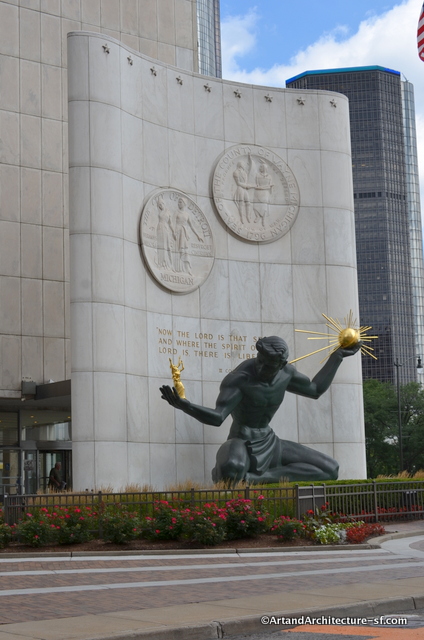
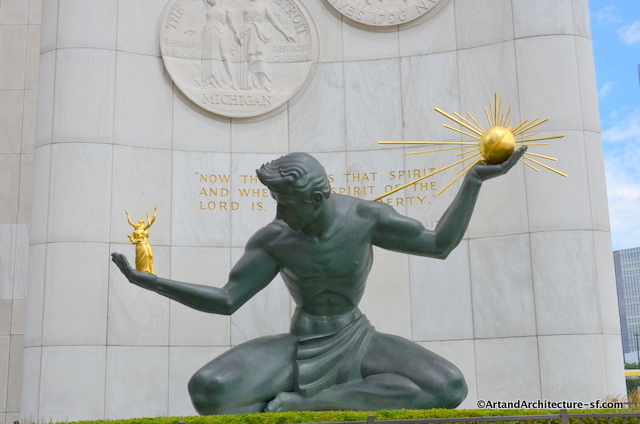 The plaque in front of the sculpture says “The artist expresses the concept that God, through the spirit of man is manifested in the family, the noblest human relationship.”
The plaque in front of the sculpture says “The artist expresses the concept that God, through the spirit of man is manifested in the family, the noblest human relationship.”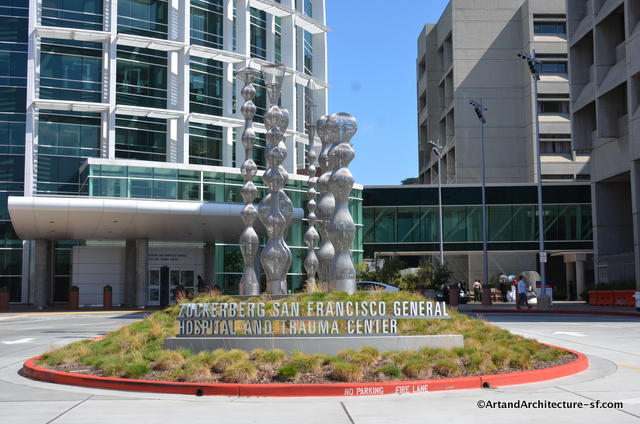
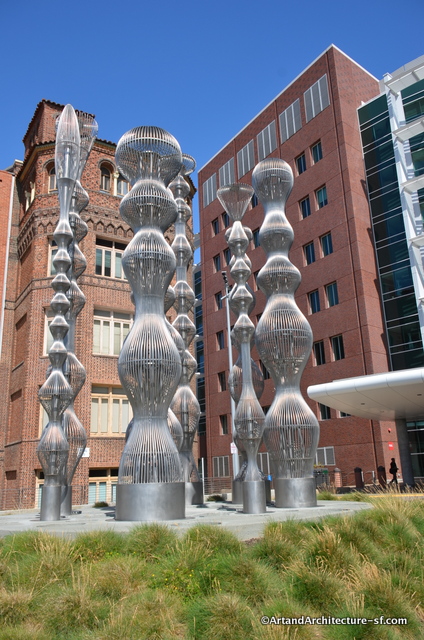
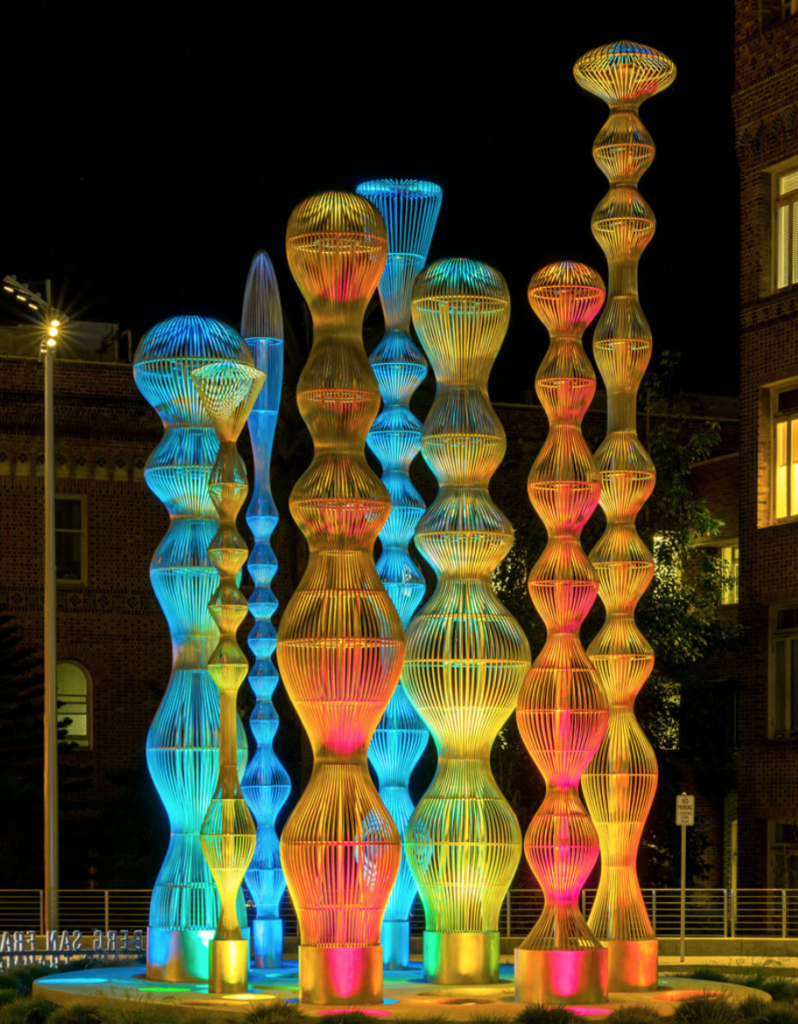
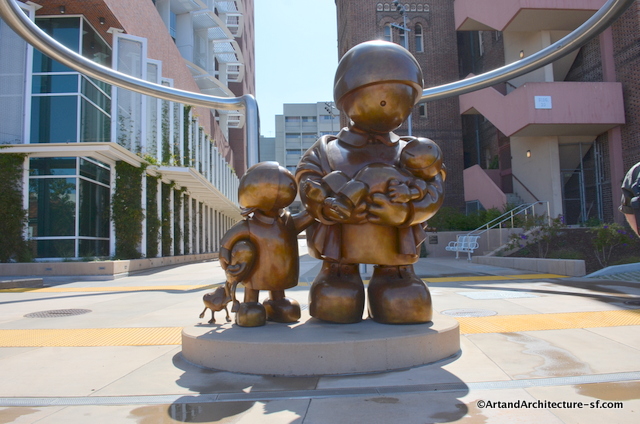
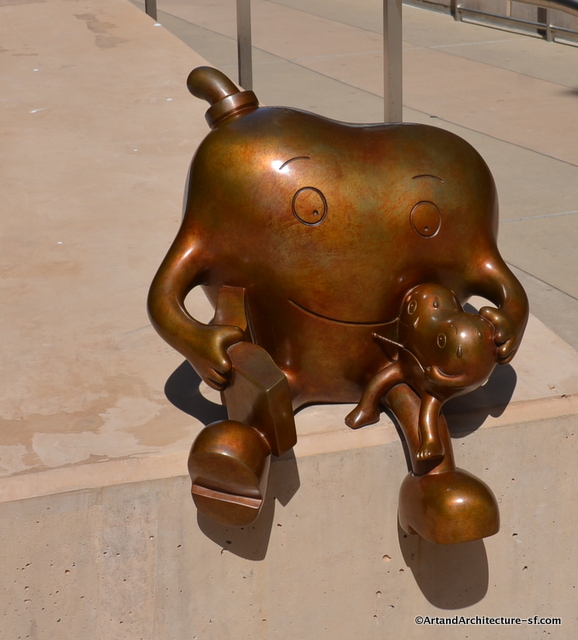
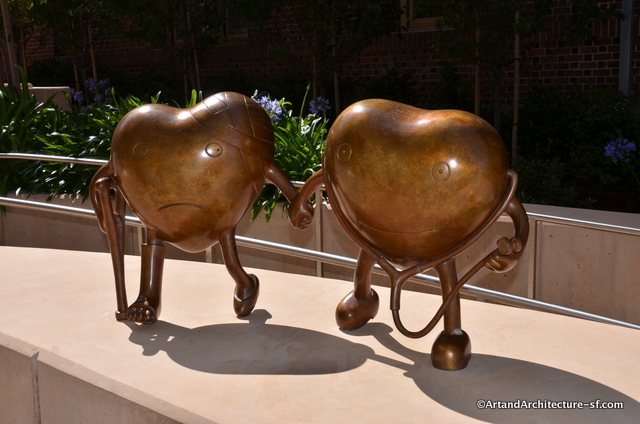
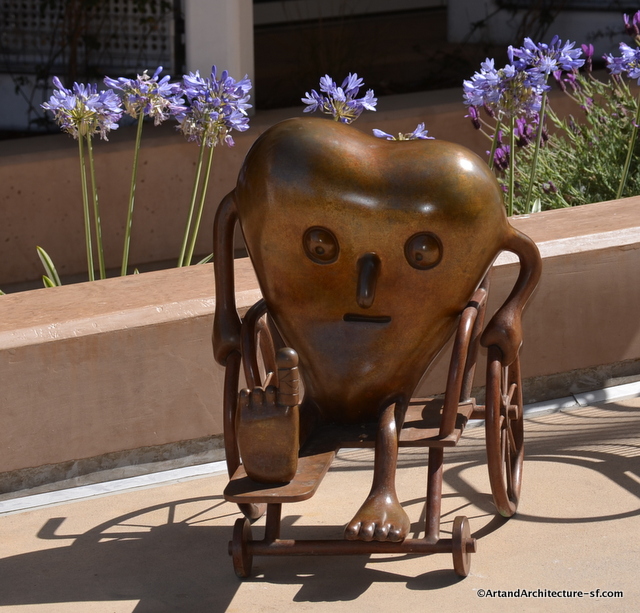
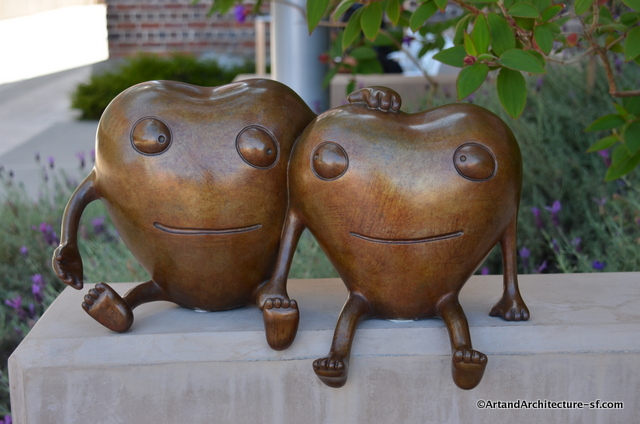
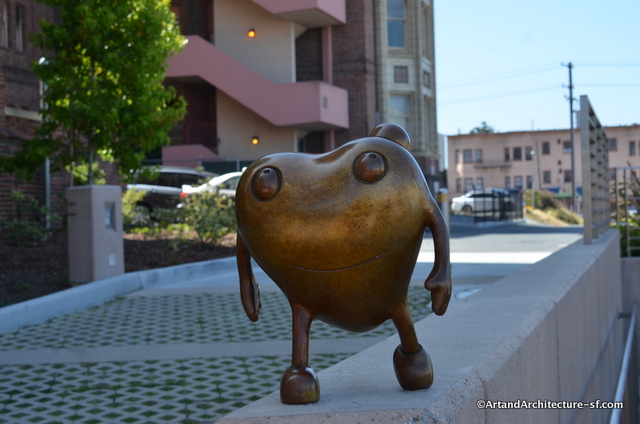
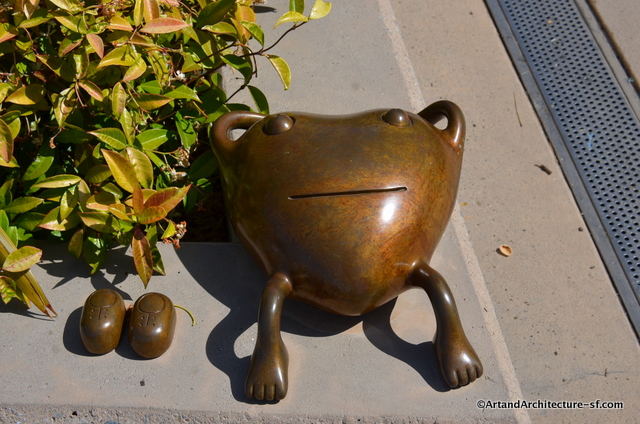
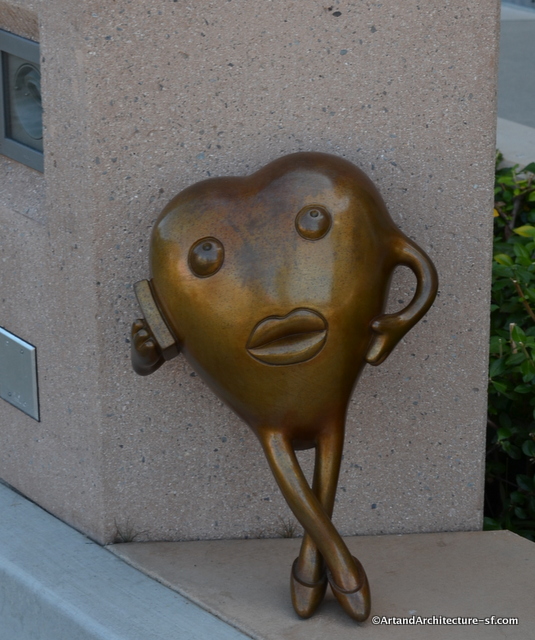




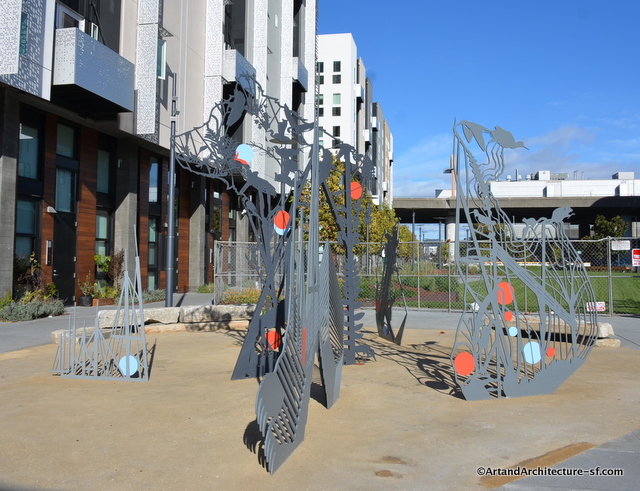 The plaque at the site reads: This artwork is inspired by the history of Mission Bay, a 5,000 year-old tidal marsh that was once the habitat of a rich array of flora and fauna. Growth of the city in the 19th century brought shipyards, warehouses and railroads and this part of the bay was eventually filled with sand and dirt from nearby development, as well as debris from the 1906 earthquake. The five panels that form Shadow Kingdom evoke this layered history. Ship masts intersect with topographical and architectural references. Some of the plants and animals that once lived here, like elk, beaver, salmon, sandpipers and pickle weed are also depicted. When viewed from a distance the sculpture takes the shape of the California grizzly bear, a species that last roamed San Francisco in the mid-1800s. As the sun arcs across the sky, these once endemic species are projected as shadows onto the terrain they once inhabited.
The plaque at the site reads: This artwork is inspired by the history of Mission Bay, a 5,000 year-old tidal marsh that was once the habitat of a rich array of flora and fauna. Growth of the city in the 19th century brought shipyards, warehouses and railroads and this part of the bay was eventually filled with sand and dirt from nearby development, as well as debris from the 1906 earthquake. The five panels that form Shadow Kingdom evoke this layered history. Ship masts intersect with topographical and architectural references. Some of the plants and animals that once lived here, like elk, beaver, salmon, sandpipers and pickle weed are also depicted. When viewed from a distance the sculpture takes the shape of the California grizzly bear, a species that last roamed San Francisco in the mid-1800s. As the sun arcs across the sky, these once endemic species are projected as shadows onto the terrain they once inhabited.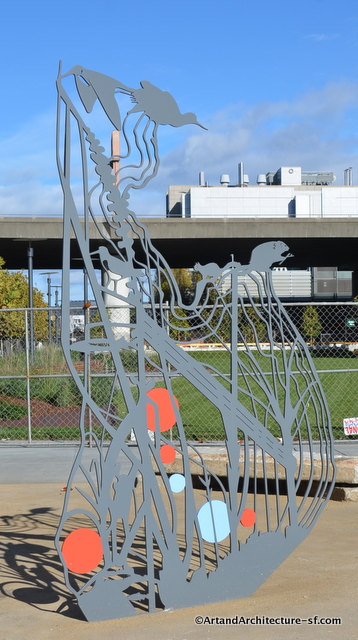 Adriane Colburn was the selected artist for this project. She holds a BFA in Printmaking, from The School of the Art Institute of Chicago, 1997 and a MFANew Genres from Stanford University, 2001.
Adriane Colburn was the selected artist for this project. She holds a BFA in Printmaking, from The School of the Art Institute of Chicago, 1997 and a MFANew Genres from Stanford University, 2001.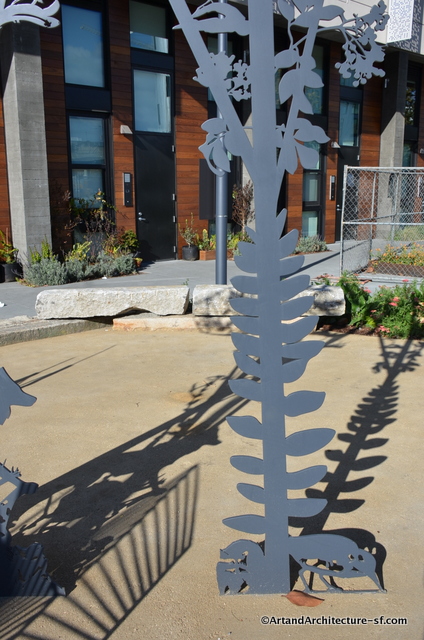 Colburn describes her work: In my practice I seek to reimagine maps and photographs of places (and networks) that are obscured by geography, scale or the passing of time. At the core of this is a fascination with the way that our attempts to make sense of the world around us through maps, data and images result in abstractions that are simultaneously informative and utterly ambiguous. I create my installations by transforming images through a system of physical removal, cutting out everything except imperative lines, thus creating constructions that are informed by voids as much as by positive marks. Through this cutting and display, an intricate array of reflective shadows results. All of my projects are based heavily on research and have a strong connection to place. My work tends to have a fragile appearance, however, my recent projects are constructed primarily of steel and aluminum, giving them a high level of permanence while maintaining their delicacy.
Colburn describes her work: In my practice I seek to reimagine maps and photographs of places (and networks) that are obscured by geography, scale or the passing of time. At the core of this is a fascination with the way that our attempts to make sense of the world around us through maps, data and images result in abstractions that are simultaneously informative and utterly ambiguous. I create my installations by transforming images through a system of physical removal, cutting out everything except imperative lines, thus creating constructions that are informed by voids as much as by positive marks. Through this cutting and display, an intricate array of reflective shadows results. All of my projects are based heavily on research and have a strong connection to place. My work tends to have a fragile appearance, however, my recent projects are constructed primarily of steel and aluminum, giving them a high level of permanence while maintaining their delicacy.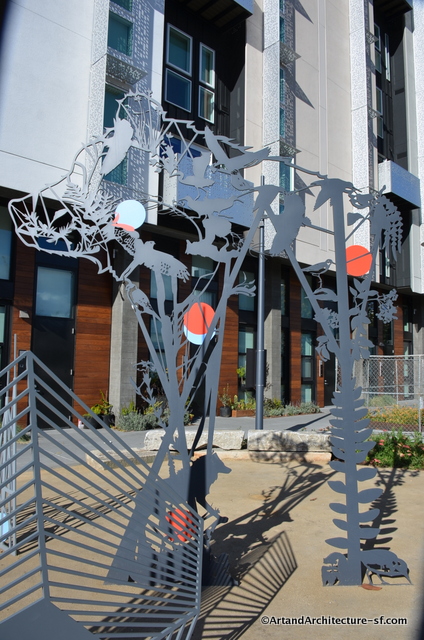 *
*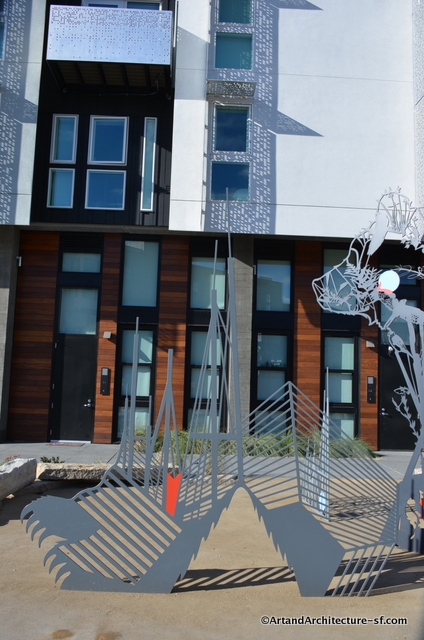 The San Francisco Art Commission budget for this project was $193,000. The piece sits at the entry of a 453-unit development by Equity Residential, on the edge of what is now called Dagget Park.
The San Francisco Art Commission budget for this project was $193,000. The piece sits at the entry of a 453-unit development by Equity Residential, on the edge of what is now called Dagget Park.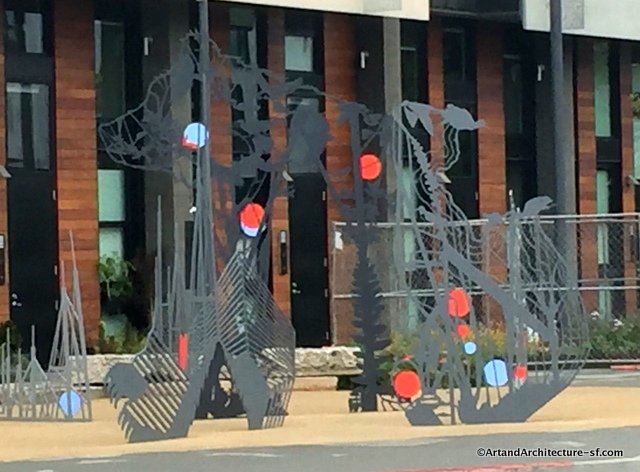
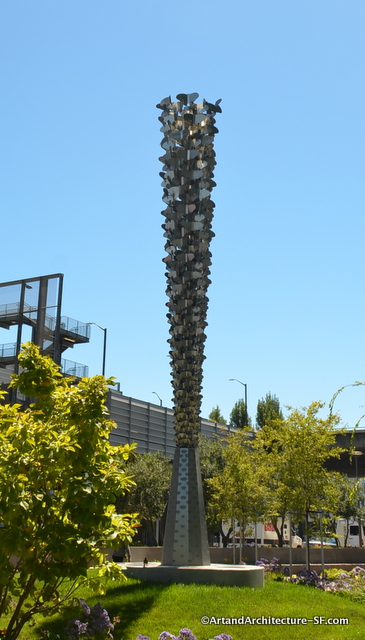

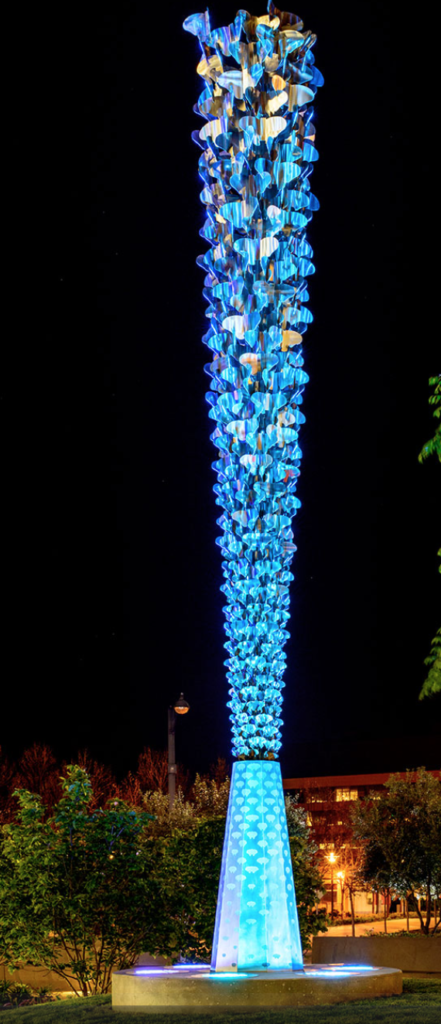
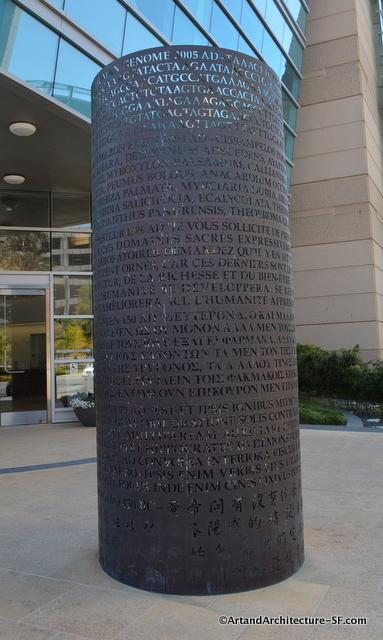
 Themes in his work have included “making the invisible visible”, with many sculptures focusing on topics such as magnetism, the carioles effect, secret messages, and mysteries of atomic reactions.
Themes in his work have included “making the invisible visible”, with many sculptures focusing on topics such as magnetism, the carioles effect, secret messages, and mysteries of atomic reactions.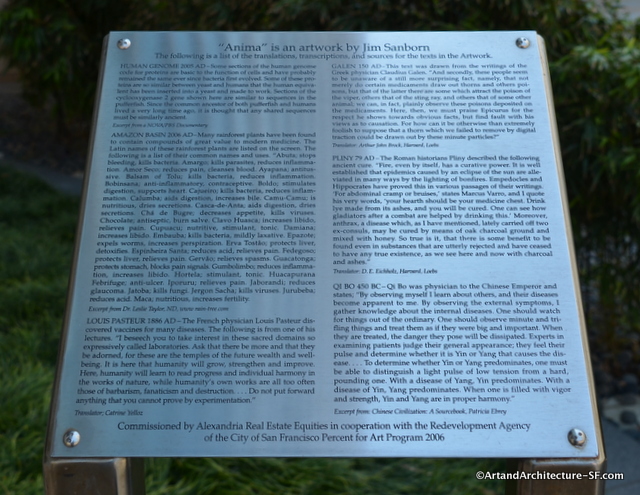
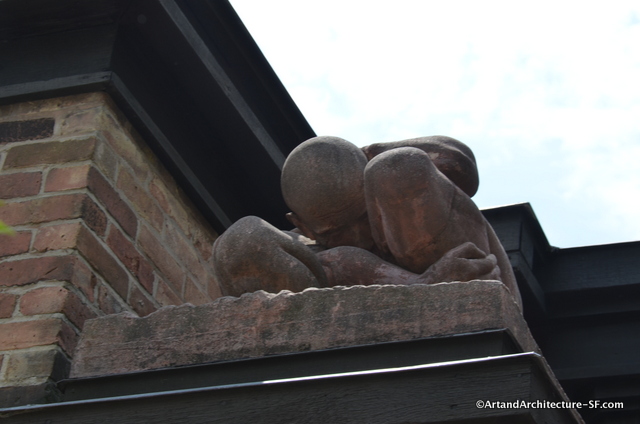 On the piers flanking the entry to Frank Lloyd Wrights 1898 architectural studio in Oak Park, Illinois, sit these two pieces, designed by Frank Lloyd Wright and executed by Richard Bock.
On the piers flanking the entry to Frank Lloyd Wrights 1898 architectural studio in Oak Park, Illinois, sit these two pieces, designed by Frank Lloyd Wright and executed by Richard Bock.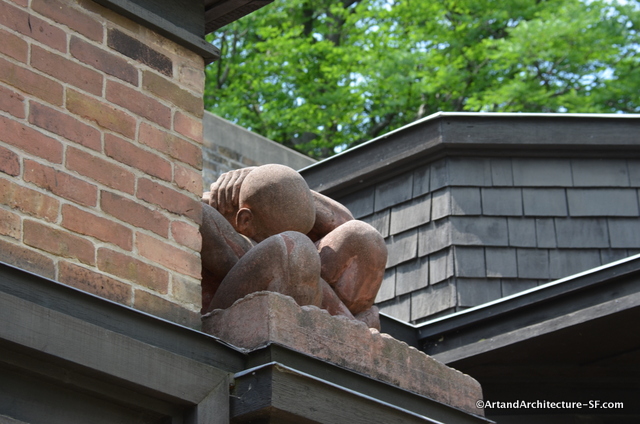 Bock spent three years at the Berlin Academy studying and later at the Ecole des Beaux Arts School in Paris. In 1891 he returned Chicago to establish a permanent sculpture studio. Almost immediately upon Bock’s return to America, he received three major commissions and for the World’s Columbian Exposition in 1893, he sculpted major architectural works for the Mining and Electricity Exposition Halls.
Bock spent three years at the Berlin Academy studying and later at the Ecole des Beaux Arts School in Paris. In 1891 he returned Chicago to establish a permanent sculpture studio. Almost immediately upon Bock’s return to America, he received three major commissions and for the World’s Columbian Exposition in 1893, he sculpted major architectural works for the Mining and Electricity Exposition Halls.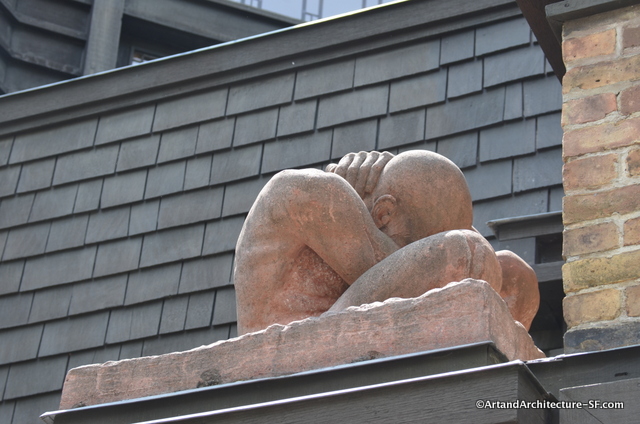
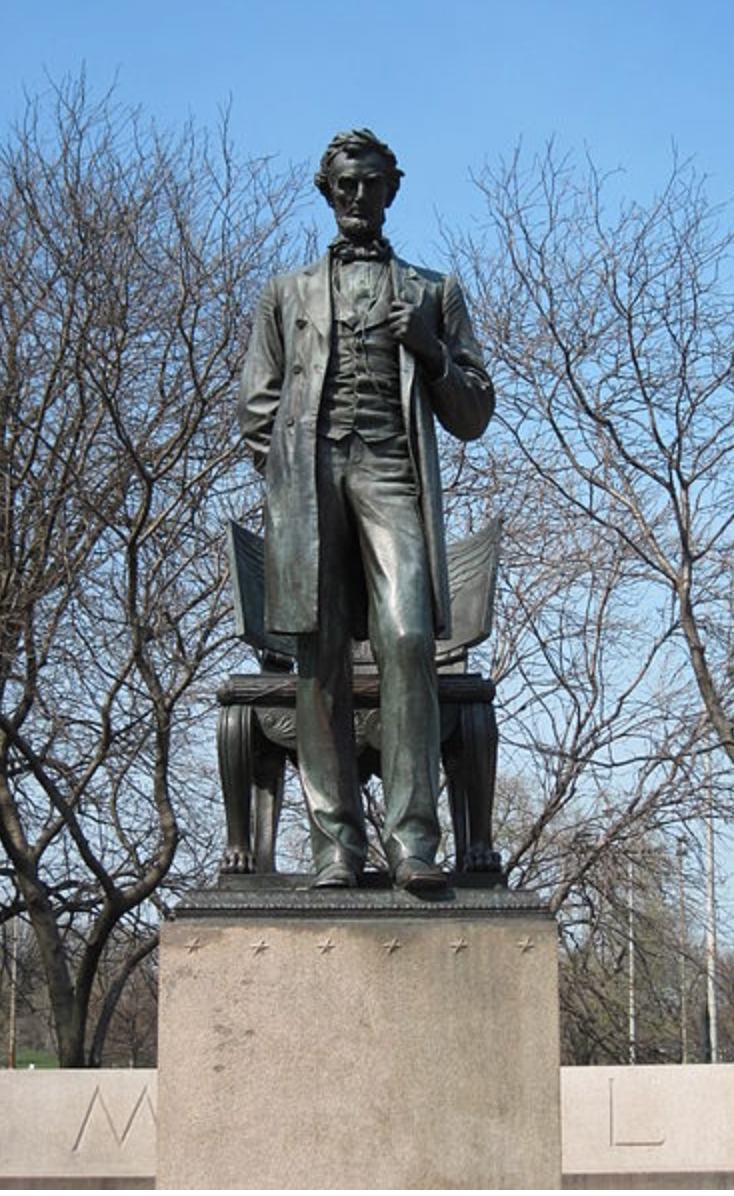
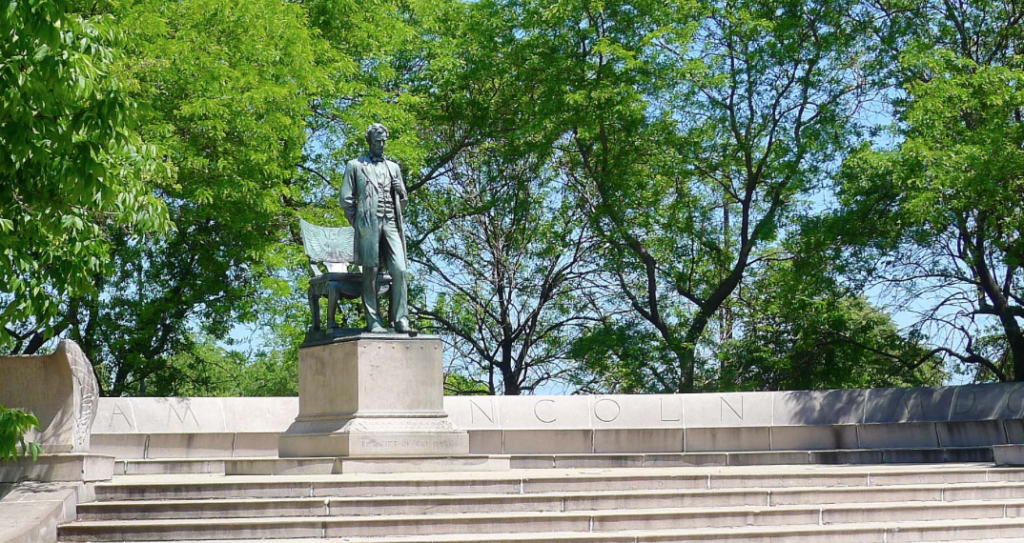 Architect, Stanford White, of the New York firm of McKim, Mead and White, designed the monument’s base. He added the long, curving exedra bench to encourage visitors to sit and enjoy the statue,
Architect, Stanford White, of the New York firm of McKim, Mead and White, designed the monument’s base. He added the long, curving exedra bench to encourage visitors to sit and enjoy the statue,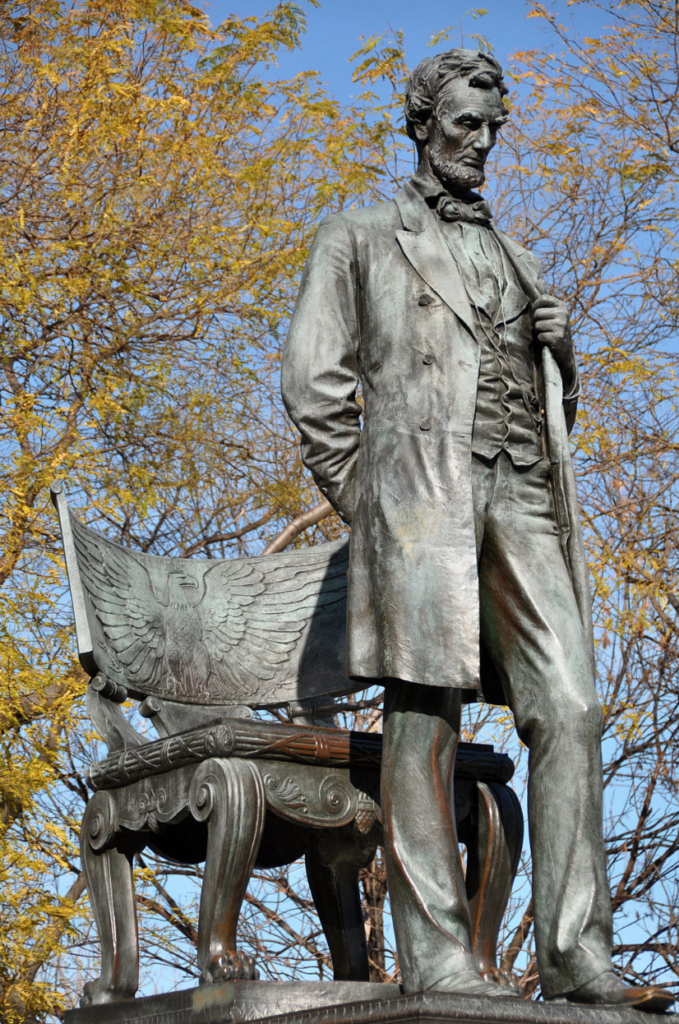
 According to the Chicago Parks Department:
According to the Chicago Parks Department: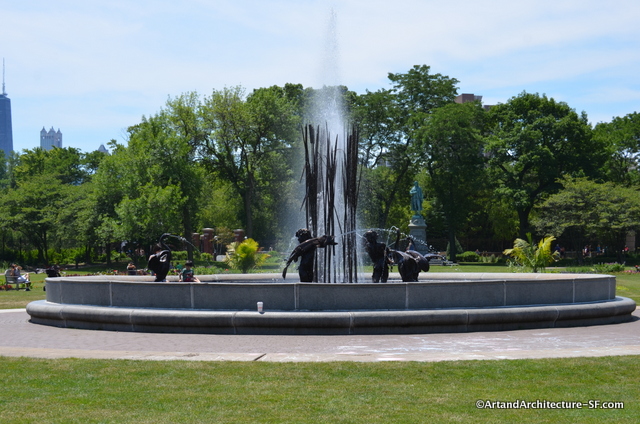 This whimsical fountain is known as both the Eli Bates Fountain and “Storks at Play”.
This whimsical fountain is known as both the Eli Bates Fountain and “Storks at Play”.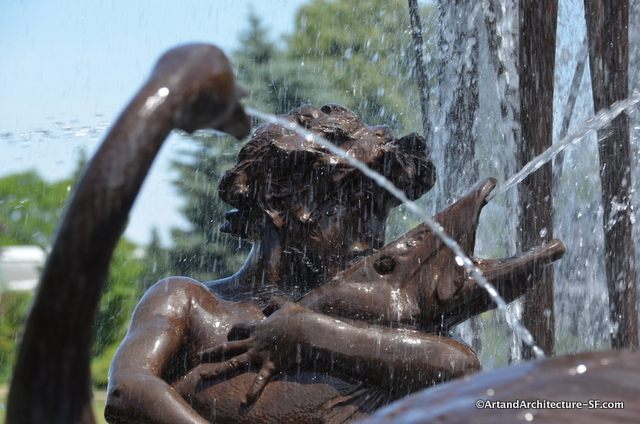 The figures for the fountain were cast by the Henry-Bonnard Bronze Company of New York.
The figures for the fountain were cast by the Henry-Bonnard Bronze Company of New York.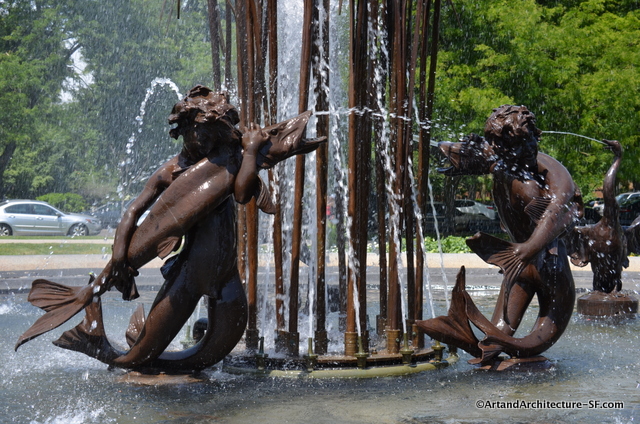 In 1888, Stanford White helped MacMonnies win two major commissions for garden sculpture, a decorative Pan fountain sculpture for Rohallion, the New Jersey mansion of banker Edward Adams, and a work for ambassador Joseph H. Choate, at Naumkeag, in Stockbridge, Massachusetts.
In 1888, Stanford White helped MacMonnies win two major commissions for garden sculpture, a decorative Pan fountain sculpture for Rohallion, the New Jersey mansion of banker Edward Adams, and a work for ambassador Joseph H. Choate, at Naumkeag, in Stockbridge, Massachusetts.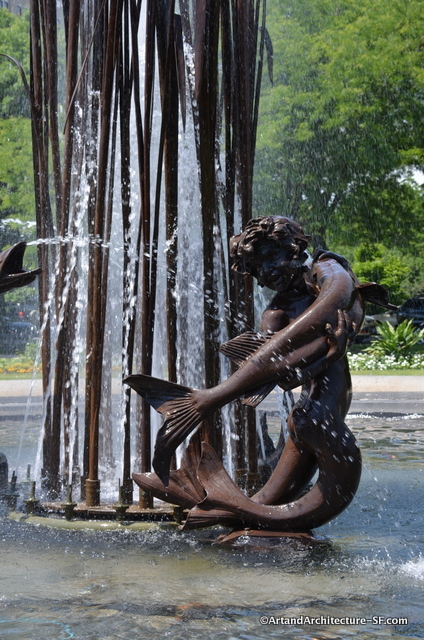 In 1894, Stanford White brought MacMonnies a commission for three bronze groups for the Soldiers and Sailors Memorial Arch in Brooklyn’s Grand Army Plaza.
In 1894, Stanford White brought MacMonnies a commission for three bronze groups for the Soldiers and Sailors Memorial Arch in Brooklyn’s Grand Army Plaza.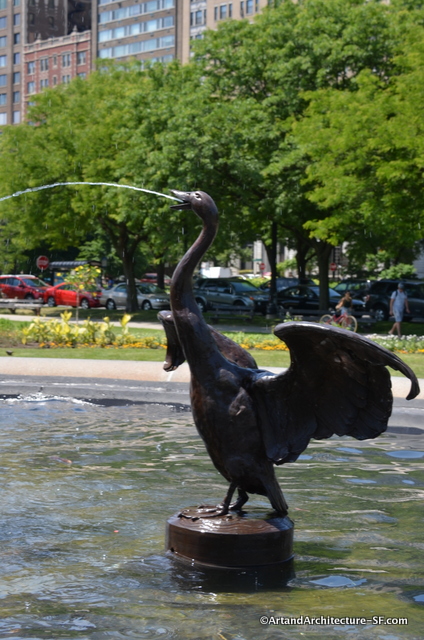
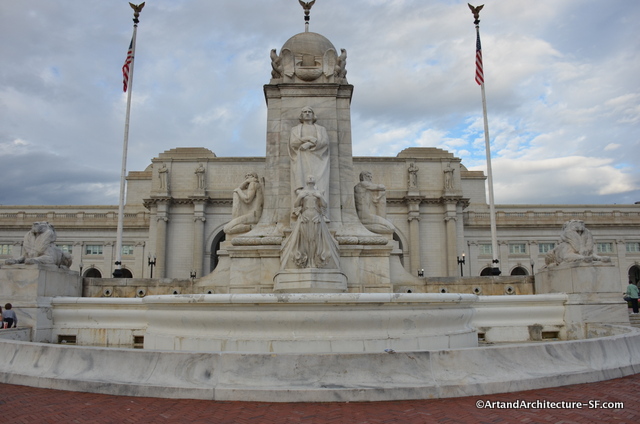
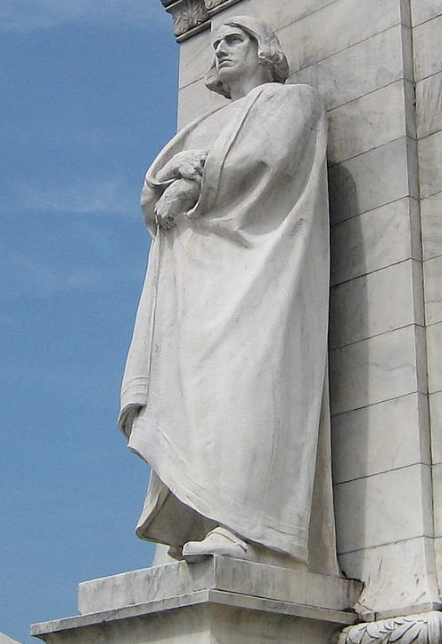 With this sculpture Lorado Taft has Columbus standing, arms crossed, facing the Capitol. He is flanked by an American Indian, representing the “New World” facing West and a bearded elderly man representing the “Old World” facing East. In front of Columbus is Discovery leading the way, and above Columbus is a globe of the world surrounded by American Eagles.
With this sculpture Lorado Taft has Columbus standing, arms crossed, facing the Capitol. He is flanked by an American Indian, representing the “New World” facing West and a bearded elderly man representing the “Old World” facing East. In front of Columbus is Discovery leading the way, and above Columbus is a globe of the world surrounded by American Eagles.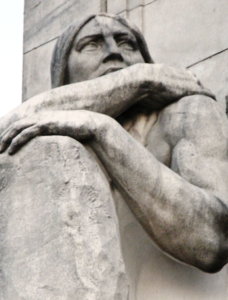
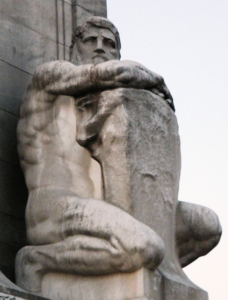
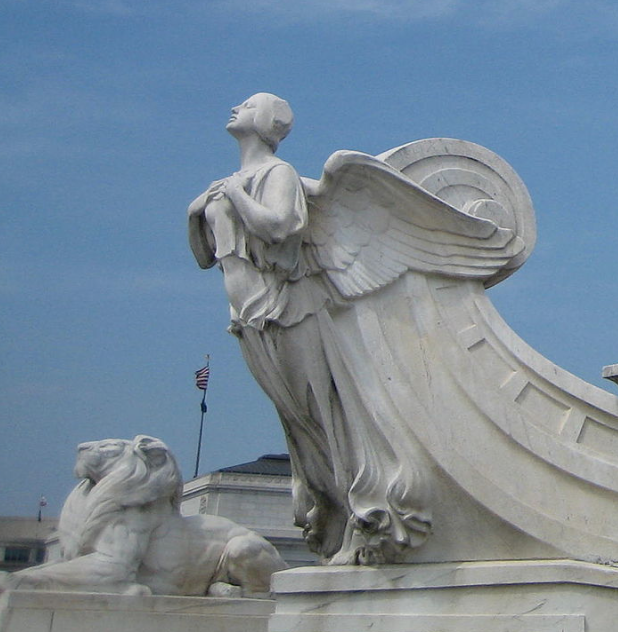 In May 1907 a commission was formed for the memorial fountain headed by prominent members of the Senate and William Howard Taft (no relation), who was Secretary of War at the time and served as committee chairman. Upon agreeing on the location for the fountain, a call for designs was requested by artists from America, Italy and Spain. The reason for the three countries stemmed from the committee idea that “if it should be from the hand of an American, the land which Columbus gave to the world; from an Italian, the land which gave Columbus to the world, or from Spain, the land which made Columbus’s achievement possible.”
In May 1907 a commission was formed for the memorial fountain headed by prominent members of the Senate and William Howard Taft (no relation), who was Secretary of War at the time and served as committee chairman. Upon agreeing on the location for the fountain, a call for designs was requested by artists from America, Italy and Spain. The reason for the three countries stemmed from the committee idea that “if it should be from the hand of an American, the land which Columbus gave to the world; from an Italian, the land which gave Columbus to the world, or from Spain, the land which made Columbus’s achievement possible.”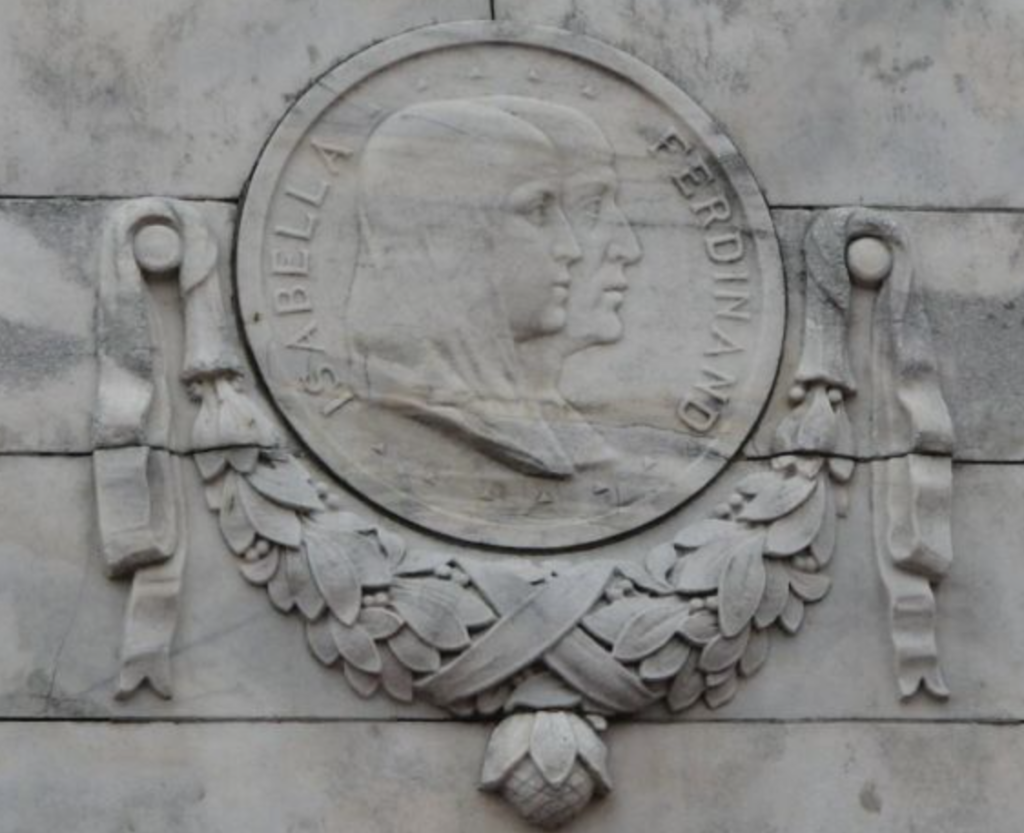
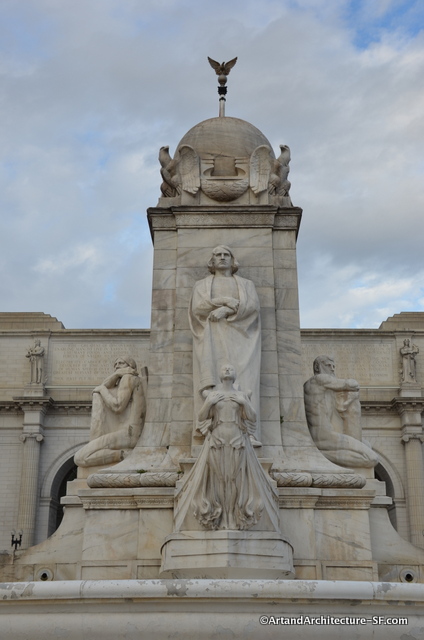


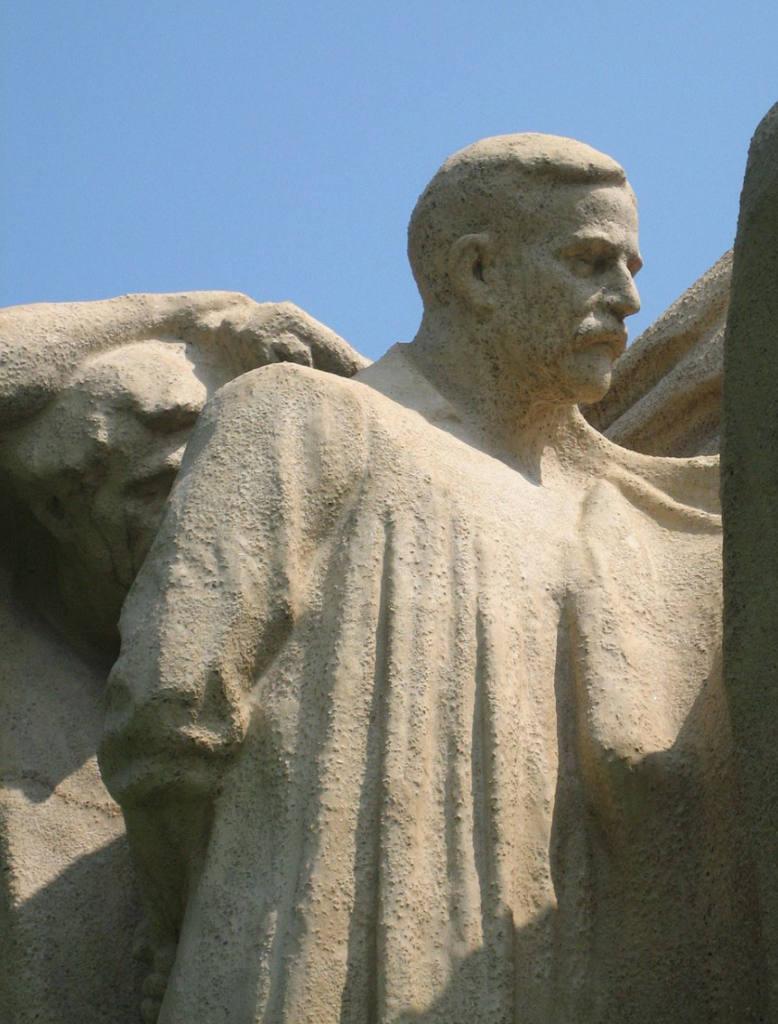
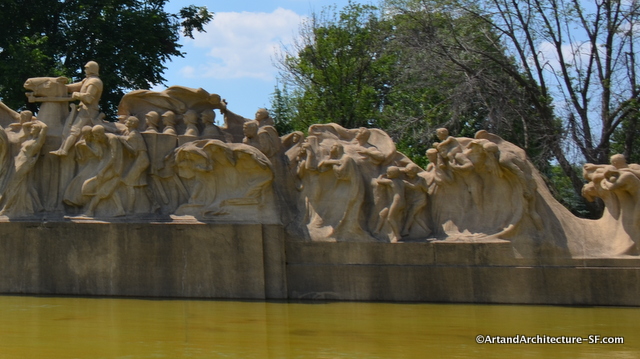 Lorado Taft initially conceived a sculpture carved from granite or Georgia marble, however, the trust only allotted enough funds for a concrete structure.
Lorado Taft initially conceived a sculpture carved from granite or Georgia marble, however, the trust only allotted enough funds for a concrete structure.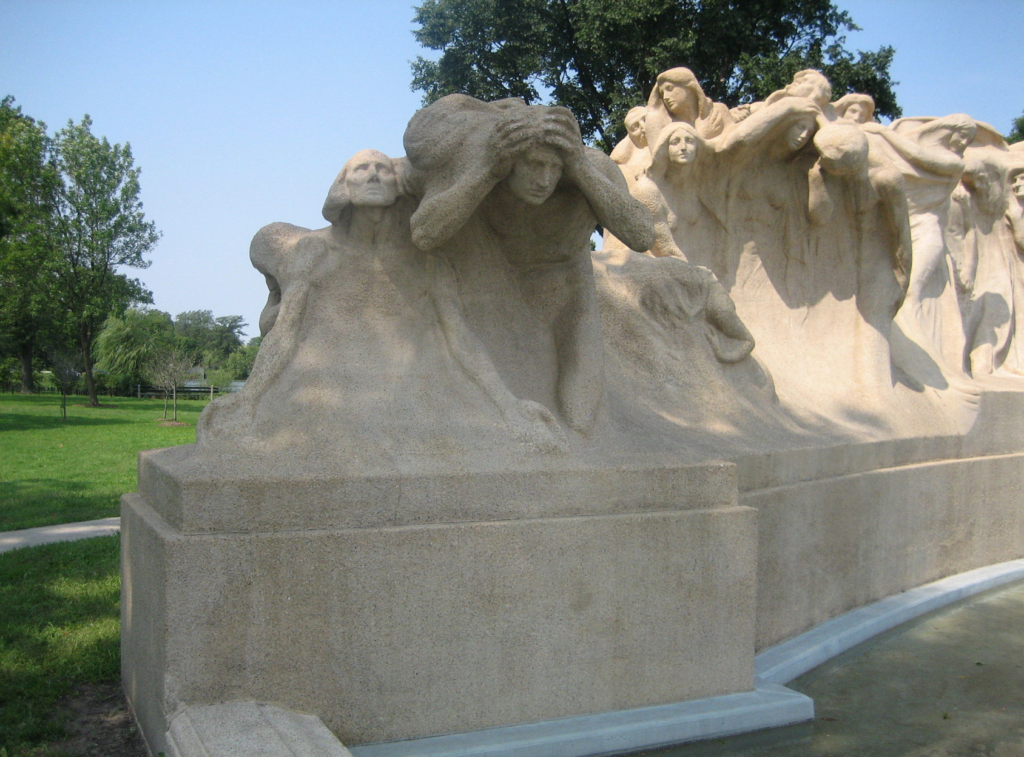 Lorado Zadoc Taft was born in Elmwood, Illinois, in 1860 and died in his home studio in Chicago in 1936.
Lorado Zadoc Taft was born in Elmwood, Illinois, in 1860 and died in his home studio in Chicago in 1936.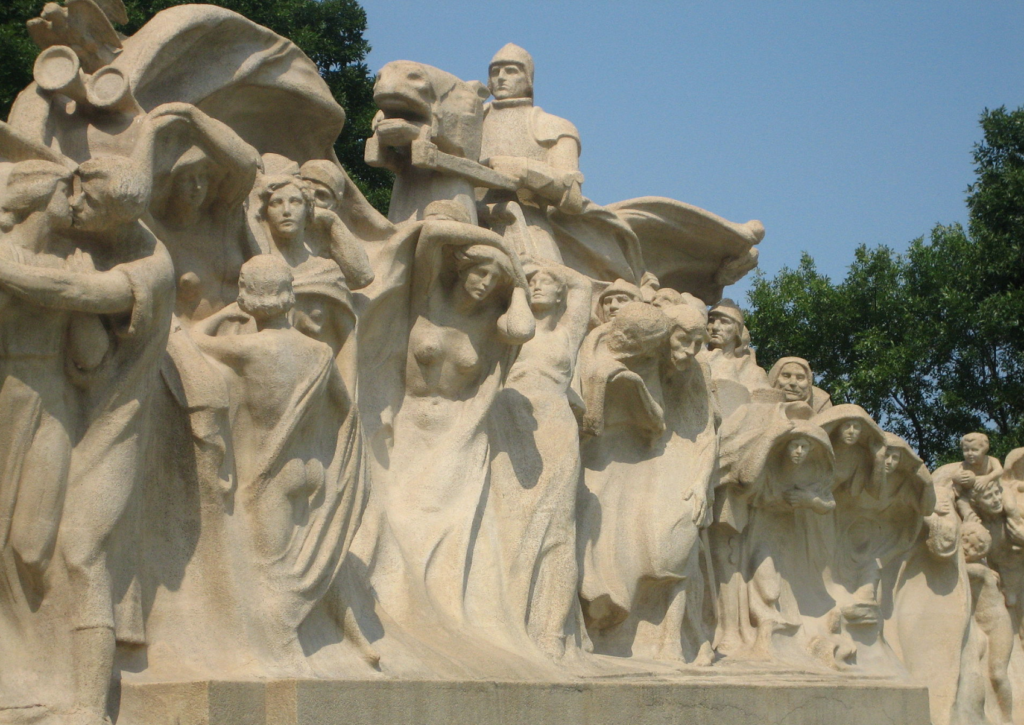 Taft’s body of work is impressive. Some notable sculptures around Chicago include Eternal Silence and The Crusader both at Graceland Cemetery, and Fountain of the Great Lakes at the Art Institute. He also sculpted the Columbus Fountain at Union Station in Washington DC.
Taft’s body of work is impressive. Some notable sculptures around Chicago include Eternal Silence and The Crusader both at Graceland Cemetery, and Fountain of the Great Lakes at the Art Institute. He also sculpted the Columbus Fountain at Union Station in Washington DC.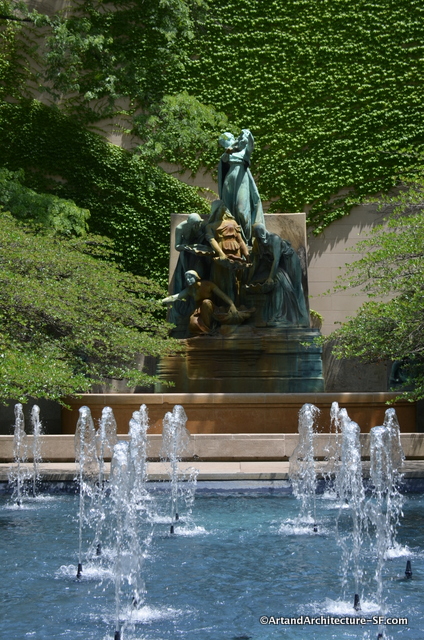
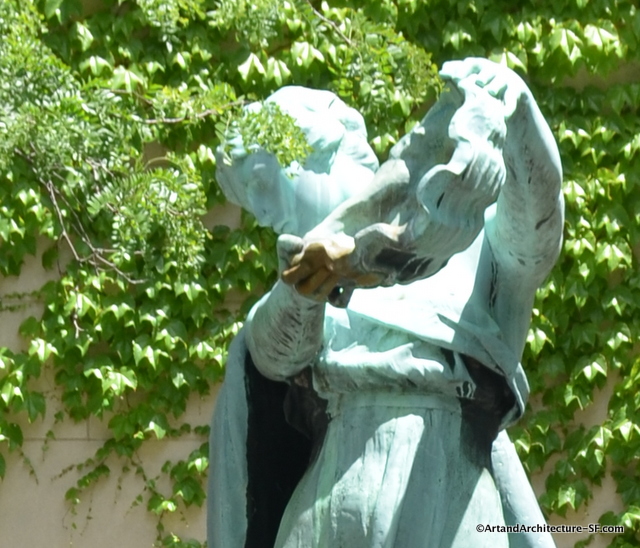
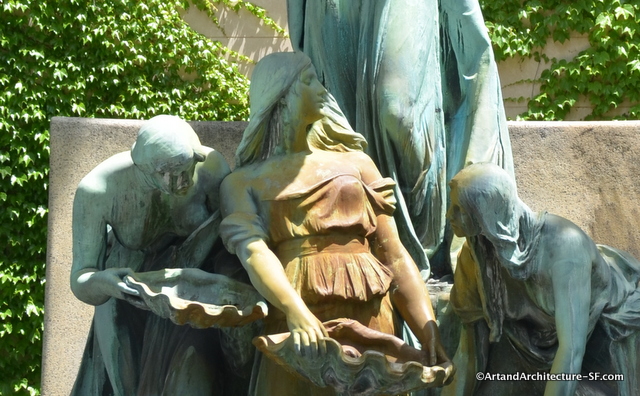
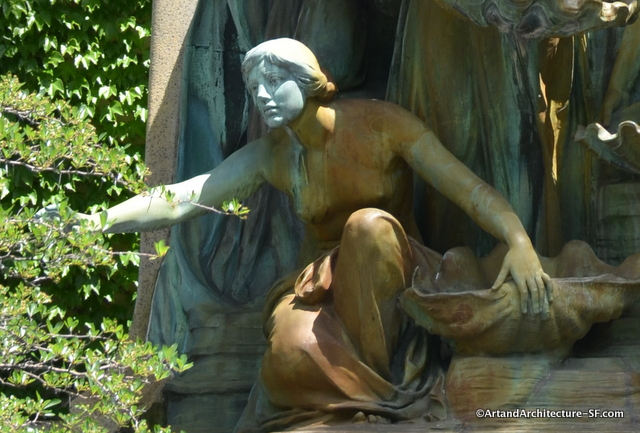
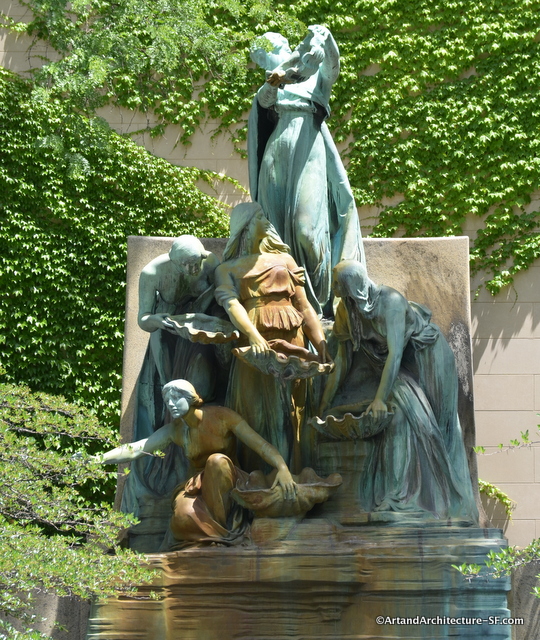
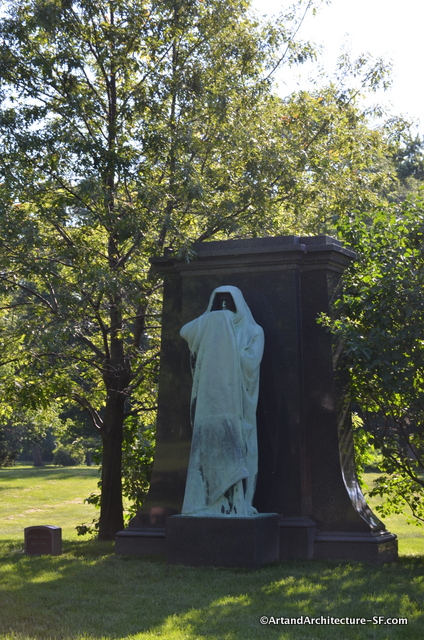 The Eternal Silence, (also called Eternal Silence or Statue of Death) marks the grave of Dexter Graves, who led a group of thirteen families that moved from Ohio to Chicago in 1831, making them some of Chicago’s earliest settlers. Graves died in 1844, seventy-five years before the creation of the statue, and sixteen years before Graceland Cemetery was founded; his body was presumably moved to Graceland from the old City Cemetery. The funds for the monument were provided in the will of his son, Henry, who died in 1907. The will provided $250,000 for a Graves family mausoleum, they received the statue instead.
The Eternal Silence, (also called Eternal Silence or Statue of Death) marks the grave of Dexter Graves, who led a group of thirteen families that moved from Ohio to Chicago in 1831, making them some of Chicago’s earliest settlers. Graves died in 1844, seventy-five years before the creation of the statue, and sixteen years before Graceland Cemetery was founded; his body was presumably moved to Graceland from the old City Cemetery. The funds for the monument were provided in the will of his son, Henry, who died in 1907. The will provided $250,000 for a Graves family mausoleum, they received the statue instead.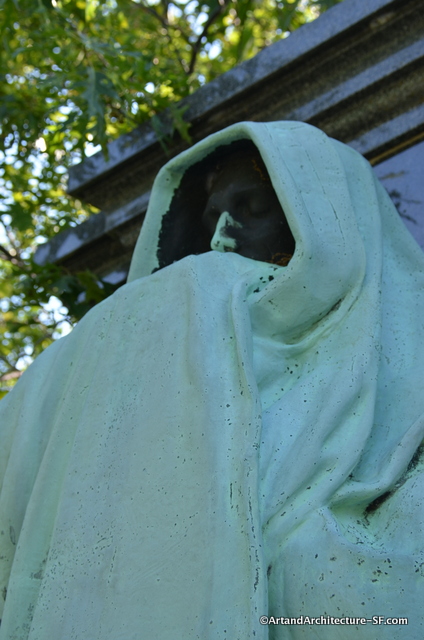 The statue was sculpted by Lorado Taft and cast by a Chicago foundry owned by Jules Bercham.
The statue was sculpted by Lorado Taft and cast by a Chicago foundry owned by Jules Bercham.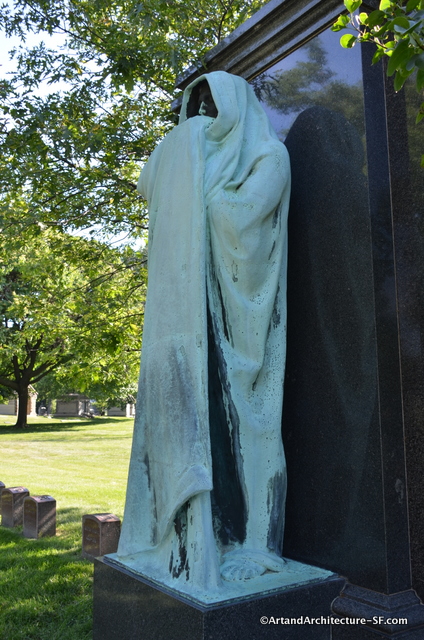
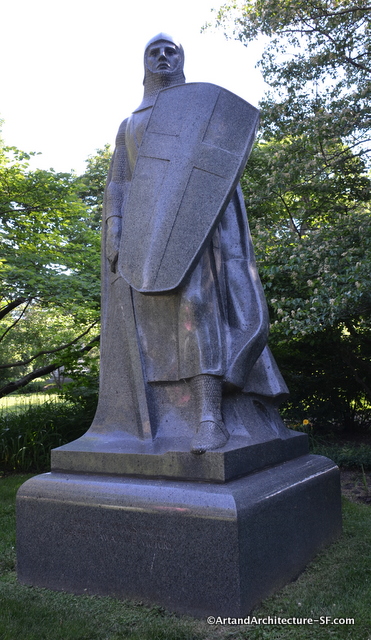
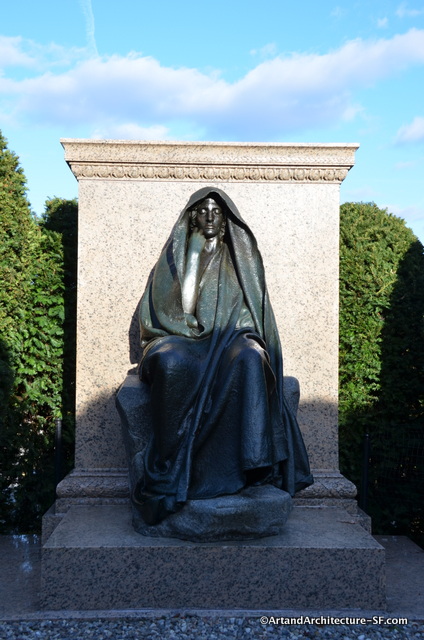 I visit the Adams Memorial whenever I am in Washington D.C. This hauntingly beautiful sculpture is one I can never tire of. It is by sculptor Augustus Saint-Gaudens.
I visit the Adams Memorial whenever I am in Washington D.C. This hauntingly beautiful sculpture is one I can never tire of. It is by sculptor Augustus Saint-Gaudens.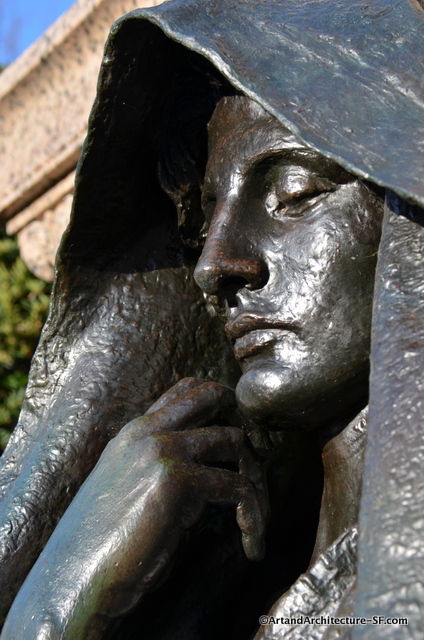
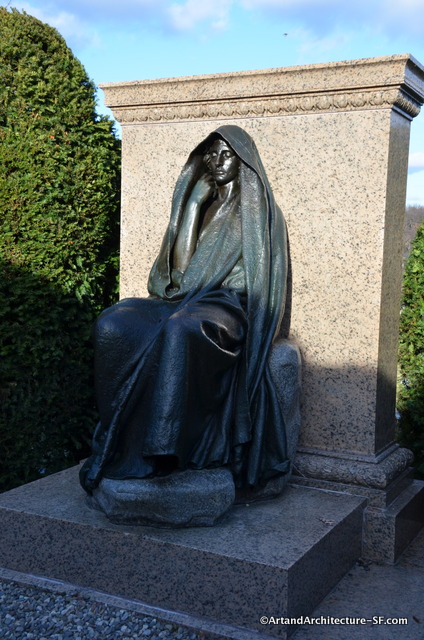
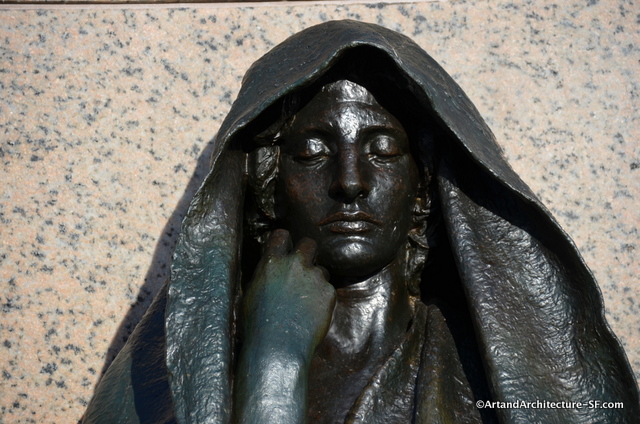
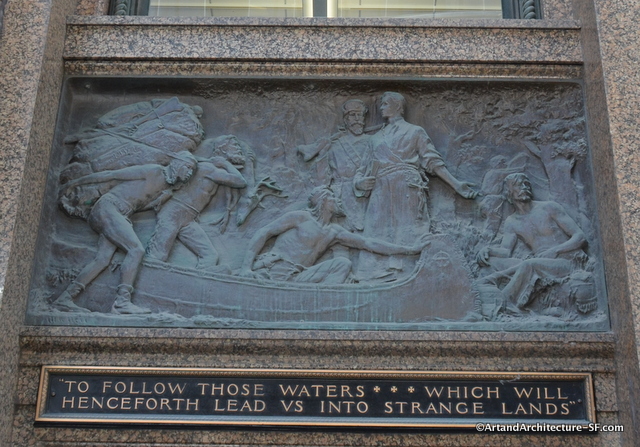 These four bronze plaques sit above the entry doors of the Marquette Building in Chicago. They were done in 1895 by Henry MacNeil (1866-1947). At the time MacNeil shared a studio in the building with painter Charles F. Browne.
These four bronze plaques sit above the entry doors of the Marquette Building in Chicago. They were done in 1895 by Henry MacNeil (1866-1947). At the time MacNeil shared a studio in the building with painter Charles F. Browne.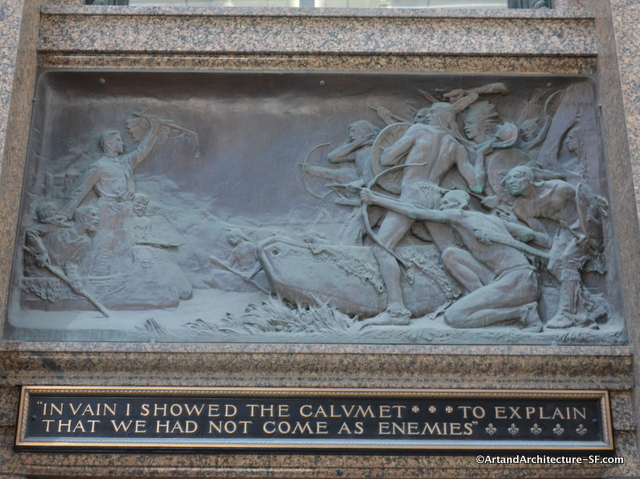 After attending one of Buffalo Bill’s Wild West Shows at the Worlds Fair he began depicting the American Indian throughout his art.
After attending one of Buffalo Bill’s Wild West Shows at the Worlds Fair he began depicting the American Indian throughout his art.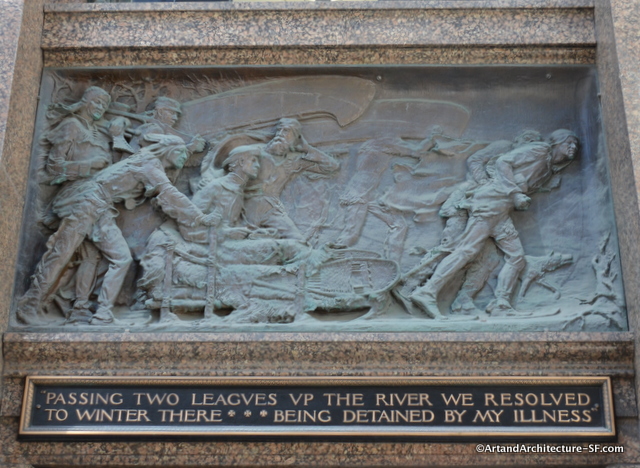 Perhaps his best known work is as the designer of the Standing Liberty quarter, which was minted from 1916 to 1930, and carries his initial to the right of the date.
Perhaps his best known work is as the designer of the Standing Liberty quarter, which was minted from 1916 to 1930, and carries his initial to the right of the date.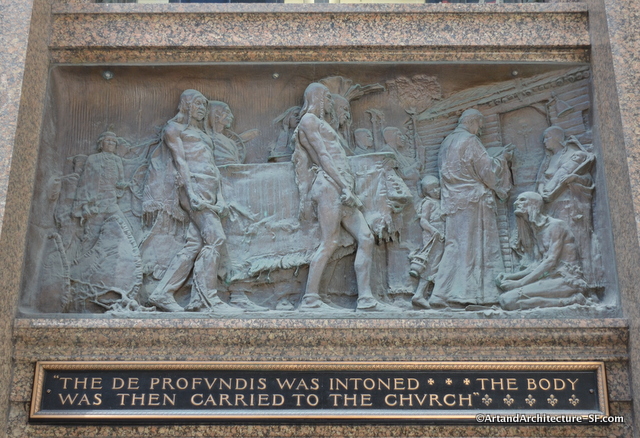
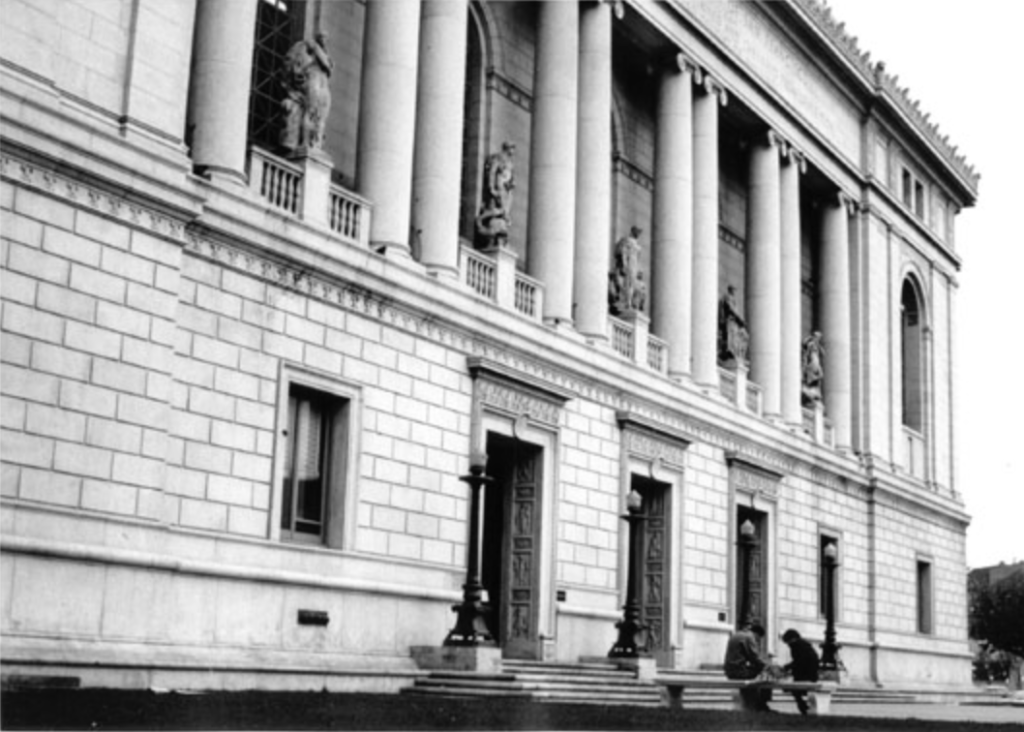
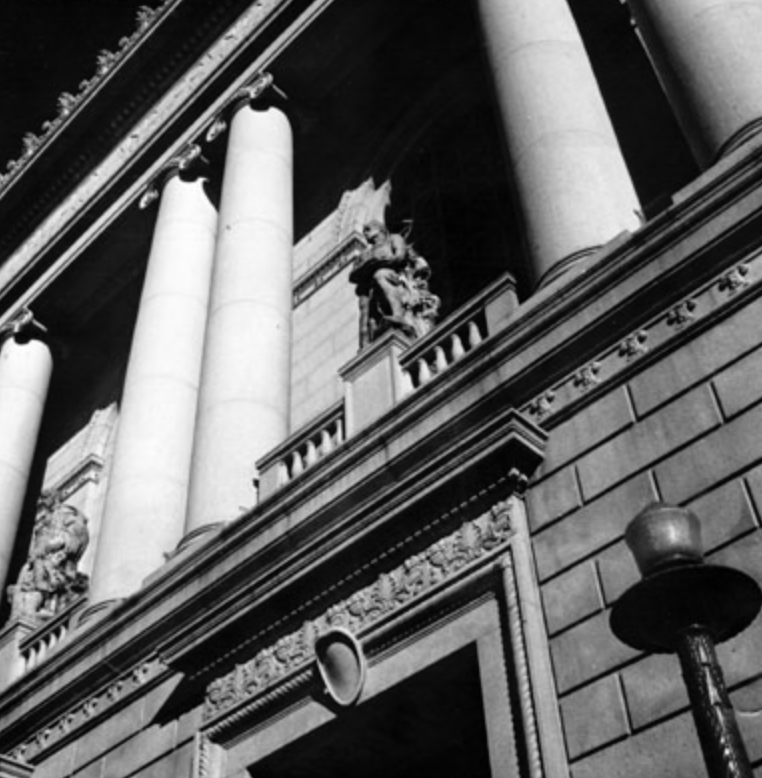
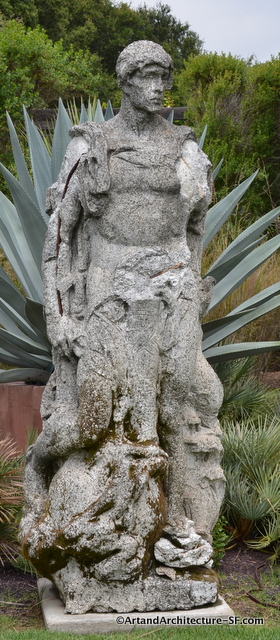 The sculptures were removed when the building was remodeled into the Asian Art museum and sold to a private collector by the City of San Francisco.
The sculptures were removed when the building was remodeled into the Asian Art museum and sold to a private collector by the City of San Francisco.